438 papers:
 SIGMOD-2015-CSKZYRPAKDRD #big data #industrial #what #why
SIGMOD-2015-CSKZYRPAKDRD #big data #industrial #what #why- Why Big Data Industrial Systems Need Rules and What We Can Do About It (PSGC, CS, KGK, HZ, FY, NR, SP, EA, GK, RD, VR, AD), pp. 265–276.
 ICSME-2015-HoraRAEDV #api #developer #ecosystem #evolution #how #smalltalk
ICSME-2015-HoraRAEDV #api #developer #ecosystem #evolution #how #smalltalk- How do developers react to API evolution? The Pharo ecosystem case (AH, RR, NA, AE, SD, MTV), pp. 251–260.
 ICSME-2015-KononenkoBGCG #bibliography #code review #matter #people #quality #question
ICSME-2015-KononenkoBGCG #bibliography #code review #matter #people #quality #question- Investigating code review quality: Do people and participation matter? (OK, OB, LG, YC, MWG), pp. 111–120.
 ICSME-2015-SzokeNHFG #automation #case study #industrial #maintenance #refactoring
ICSME-2015-SzokeNHFG #automation #case study #industrial #maintenance #refactoring- Do automatic refactorings improve maintainability? An industrial case study (GS, CN, PH, RF, TG), pp. 429–438.
 MSR-2015-CamiloMN #case study #debugging
MSR-2015-CamiloMN #case study #debugging- Do Bugs Foreshadow Vulnerabilities? A Study of the Chromium Project (FC, AM, MN), pp. 269–279.
 MSR-2015-LabuschagneH #question #source code
MSR-2015-LabuschagneH #question #source code- Do Onboarding Programs Work? (AL, RH), pp. 381–385.
 MSR-2015-ZouXGYYZ #analysis #developer #empirical #non-functional #requirements #stack overflow #topic #using
MSR-2015-ZouXGYYZ #analysis #developer #empirical #non-functional #requirements #stack overflow #topic #using- Which Non-functional Requirements Do Developers Focus On? An Empirical Study on Stack Overflow Using Topic Analysis (JZ, LX, WG, MY, DY, XZ), pp. 446–449.
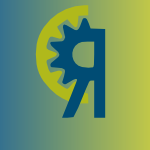 SANER-2015-MoralesMK #bibliography #case study #code review #design #quality
SANER-2015-MoralesMK #bibliography #case study #code review #design #quality- Do code review practices impact design quality? A case study of the Qt, VTK, and ITK projects (RM, SM, FK), pp. 171–180.
 SCAM-2015-SteidlD #how #java #question
SCAM-2015-SteidlD #how #java #question- How do Java methods grow? (DS, FD), pp. 151–160.
 CHI-2015-DenisovaC #game studies #question
CHI-2015-DenisovaC #game studies #question- First Person vs. Third Person Perspective in Digital Games: Do Player Preferences Affect Immersion? (AD, PC), pp. 145–148.
 CHI-2015-FrenchSBH #ambiguity #how #lens
CHI-2015-FrenchSBH #ambiguity #how #lens- Is This How We (All) Do It?: Butler Lies and Ambiguity Through a Broader Lens (MF, MES, JPB, JTH), pp. 4079–4082.
 CHI-2015-HangLH #authentication #exclamation #security #smarttech #what
CHI-2015-HangLH #authentication #exclamation #security #smarttech #what- I Know What You Did Last Week! Do You?: Dynamic Security Questions for Fallback Authentication on Smartphones (AH, ADL, HH), pp. 1383–1392.
 CSCW-2015-GelleyJ
CSCW-2015-GelleyJ- Do I Need To Follow You?: Examining the Utility of The Pinterest Follow Mechanism (BG, AJ), pp. 1751–1762.
 CSCW-2015-GuhaW #network #social
CSCW-2015-GuhaW #network #social- Do Birds of a Feather Watch Each Other?: Homophily and Social Surveillance in Location Based Social Networks (SG, SBW), pp. 1010–1020.
 CSCW-2015-TrainerCKH #community #question #what
CSCW-2015-TrainerCKH #community #question #what- From Personal Tool to Community Resource: What’s the Extra Work and Who Will Do It? (EHT, CC, AK, JDH), pp. 417–430.
 CSCW-2015-WieseMHZ #quote
CSCW-2015-WieseMHZ #quote- “You Never Call, You Never Write”: Call and SMS Logs Do Not Always Indicate Tie Strength (JW, JKM, JIH, JZ), pp. 765–774.
 DUXU-IXD-2015-Moldenhauer #design #how #student
DUXU-IXD-2015-Moldenhauer #design #how #student- How Do I Get to Room 3106? — Student Wayfinding Designs for Old Main at Wayne State University (JAM), pp. 390–399.
 HCI-IT-2015-RughinisT #game studies #gender #quote #sketching
HCI-IT-2015-RughinisT #game studies #gender #quote #sketching- “Sketchy Wives” and “Funny Heroines” — Doing and Undoing Gender in Art Games (CR, ET), pp. 640–648.
 HCI-UC-2015-ClarkeBK #experience #question #using #what
HCI-UC-2015-ClarkeBK #experience #question #using #what- What Learnability Issues Do Primary Care Physicians Experience When Using CPOE? (MAC, JLB, MSK), pp. 373–383.
 HIMI-IKD-2015-WinterSTMCSVS #learning #question #student
HIMI-IKD-2015-WinterSTMCSVS #learning #question #student- Learning to Manage NextGen Environments: Do Student Controllers Prefer to Use Datalink or Voice? (AW, JS, YT, AM, SC, KS, KPLV, TZS), pp. 661–667.
 LCT-2015-ValdezBGSZ #complexity #visualisation #what
LCT-2015-ValdezBGSZ #complexity #visualisation #what- What Do My Colleagues Know? Dealing with Cognitive Complexity in Organizations Through Visualizations (ACV, SB, CG, US, MZ), pp. 449–459.
 SCSM-2015-BeldadK #facebook #risk management
SCSM-2015-BeldadK #facebook #risk management- It’s Not About the Risks, I’m just Used to Doing It: Disclosure of Personal Information on Facebook Among Adolescent Dutch Users (ADB, RK), pp. 185–195.
 ECIR-2015-UrbanoM #correlation #definite clause grammar #how #question #user satisfaction
ECIR-2015-UrbanoM #correlation #definite clause grammar #how #question #user satisfaction- How Do Gain and Discount Functions Affect the Correlation between DCG and User Satisfaction? (JU, MM), pp. 197–202.
 SEKE-2015-ValentimCEP #how #usability
SEKE-2015-ValentimCEP #how #usability- How do software engineers apply an early usability inspection technique? A qualitative study (NMCV, TC, BJdSE, RP), pp. 686–691.
 SEKE-2015-WuCZX #c++ #developer #empirical #how #library
SEKE-2015-WuCZX #c++ #developer #empirical #how #library- How do developers use C++ libraries? An empirical study (DW, LC, YZ, BX), pp. 260–265.
 POPL-2015-VafeiadisBCMN #compilation #memory management #optimisation #what
POPL-2015-VafeiadisBCMN #compilation #memory management #optimisation #what- Common Compiler Optimisations are Invalid in the C11 Memory Model and what we can do about it (VV, TB, SC, RM, FZN), pp. 209–220.
 ESEC-FSE-2015-BellerGPZ #developer #how #ide #why
ESEC-FSE-2015-BellerGPZ #developer #how #ide #why- When, how, and why developers (do not) test in their IDEs (MB, GG, AP, AZ), pp. 179–190.
 ICSE-v1-2015-YskoutSJ #design #question #security
ICSE-v1-2015-YskoutSJ #design #question #security- Do Security Patterns Really Help Designers? (KY, RS, WJ), pp. 292–302.
 ICSE-v2-2015-BellerGZ #developer #how #question
ICSE-v2-2015-BellerGZ #developer #how #question- How (Much) Do Developers Test? (MB, GG, AZ), pp. 559–562.
 ICSE-v2-2015-CzerwonkaGT #bibliography #code review #debugging #how
ICSE-v2-2015-CzerwonkaGT #bibliography #code review #debugging #how- Code Reviews Do Not Find Bugs. How the Current Code Review Best Practice Slows Us Down (JC, MG, JT), pp. 27–28.
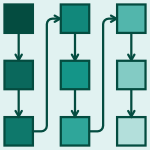 PLEASE-2015-ChitchyanNG #product line #re-engineering #what
PLEASE-2015-ChitchyanNG #product line #re-engineering #what- What Can Software Engineering Do for Sustainability: Case of Software Product Lines (RC, JN, IG), pp. 11–14.
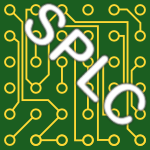 SPLC-2015-GreggSC #product line
SPLC-2015-GreggSC #product line- The more you do, the more you save: the superlinear cost avoidance effect of systems product line engineering (SPG, RS, PC), pp. 303–310.
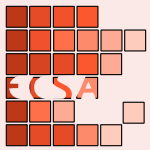 ECSA-2014-CaraccioloLN #architecture #how #quality #question #requirements #validation
ECSA-2014-CaraccioloLN #architecture #how #quality #question #requirements #validation- How Do Software Architects Specify and Validate Quality Requirements? (AC, MFL, ON), pp. 374–389.
 ASE-2014-KochharTL #bias #debugging #locality #matter #question
ASE-2014-KochharTL #bias #debugging #locality #matter #question- Potential biases in bug localization: do they matter? (PSK, YT, DL), pp. 803–814.
 ITiCSE-2014-EdwardsS #question #student #testing
ITiCSE-2014-EdwardsS #question #student #testing- Do student programmers all tend to write the same software tests? (SHE, ZS), pp. 171–176.
 ICPC-2014-ShahinLL #architecture #comprehension #design
ICPC-2014-ShahinLL #architecture #comprehension #design- Do architectural design decisions improve the understanding of software architecture? two controlled experiments (MS, PL, ZL), pp. 3–13.
 ICPC-2014-VasquezBPOP #android #api #case study #how #stack overflow
ICPC-2014-VasquezBPOP #android #api #case study #how #stack overflow- How do API changes trigger stack overflow discussions? a study on the Android SDK (MLV, GB, MDP, RO, DP), pp. 83–94.
 ICSME-2014-EderFHJ #question
ICSME-2014-EderFHJ #question- Which Features Do My Users (Not) Use? (SE, HF, BH, MJ), pp. 446–450.
 ICSME-2014-KerzaziKA #automation #empirical #why
ICSME-2014-KerzaziKA #automation #empirical #why- Why Do Automated Builds Break? An Empirical Study (NK, FK, BA), pp. 41–50.
 ICSME-2014-PalombaBPOL #case study #developer #smell
ICSME-2014-PalombaBPOL #case study #developer #smell- Do They Really Smell Bad? A Study on Developers’ Perception of Bad Code Smells (FP, GB, MDP, RO, ADL), pp. 101–110.
 MSR-2014-BellerBZJ #code review #open source #problem #question
MSR-2014-BellerBZJ #code review #open source #problem #question- Modern code reviews in open-source projects: which problems do they fix? (MB, AB, AZ, EJ), pp. 202–211.
 MSR-2014-BrunetMTFG #design #developer #question
MSR-2014-BrunetMTFG #design #developer #question- Do developers discuss design? (JB, GCM, RT, JCAdF, DSG), pp. 340–343.
 MSR-2014-MurgiaTAO #analysis #developer
MSR-2014-MurgiaTAO #analysis #developer- Do developers feel emotions? an exploratory analysis of emotions in software artifacts (AM, PT, BA, MO), pp. 262–271.
 ICALP-v1-2014-IaconoO #why
ICALP-v1-2014-IaconoO #why- Why Some Heaps Support Constant-Amortized-Time Decrease-Key Operations, and Others Do Not (JI, ÖÖ), pp. 637–649.
 CHI-2014-CostanzaFCRRJ #energy
CHI-2014-CostanzaFCRRJ #energy- Doing the laundry with agents: a field trial of a future smart energy system in the home (EC, JEF, JAC, TR, SDR, NRJ), pp. 813–822.
 CHI-2014-KobsaKL #behaviour #personalisation #privacy
CHI-2014-KobsaKL #behaviour #personalisation #privacy- Let’s do it at my place instead?: attitudinal and behavioral study of privacy in client-side personalization (AK, BPK, BL), pp. 81–90.
 CHI-2014-MasseyTTW #file system #question #what
CHI-2014-MasseyTTW #file system #question #what- PIM and personality: what do our personal file systems say about us? (CM, ST, CT, SW), pp. 3695–3704.
 CHI-2014-MellisB
CHI-2014-MellisB- Do-it-yourself cellphones: an investigation into the possibilities and limits of high-tech diy (DAM, LB), pp. 1723–1732.
 CHI-2014-NguyenDCWD #game studies
CHI-2014-NguyenDCWD #game studies- DoDo game, a color vision deficiency screening test for young children (LCN, EYLD, AC, YW, HBLD), pp. 2289–2292.
 CHI-2014-SchulerGMRJ #comprehension #coordination #social
CHI-2014-SchulerGMRJ #comprehension #coordination #social- The doing of doing stuff: understanding the coordination of social group-activities (RPS, SAG, JMM, STR, QJ), pp. 119–128.
 CHI-2014-SinghKJFTKBW #design #people #physics #process
CHI-2014-SinghKJFTKBW #design #people #physics #process- Motivating people with chronic pain to do physical activity: opportunities for technology design (AS, AK, JJ, AF, ATJ, NK, NBB, ACdCW), pp. 2803–2812.
 CHI-2014-Wein #question #recognition #visual notation
CHI-2014-Wein #question #recognition #visual notation- Visual recognition in museum guide apps: do visitors want it? (LW), pp. 635–638.
 CSCW-2014-ForteDMA #network #online #social #student #what
CSCW-2014-ForteDMA #network #online #social #student #what- What do teens ask their online social networks?: social search practices among high school students (AF, MD, RMM, DEA), pp. 28–37.
 CSCW-2014-ZhuDKK #assessment #learning #performance
CSCW-2014-ZhuDKK #assessment #learning #performance- Reviewing versus doing: learning and performance in crowd assessment (HZ, SPD, REK, AK), pp. 1445–1455.
 DUXU-ELAS-2014-DysonJ #interface #question #what
DUXU-ELAS-2014-DysonJ #interface #question #what- Examining the Interfaces to E-journal Articles: What Do Users Expect? (MCD, EMJ), pp. 164–172.
 DUXU-ELAS-2014-MontAlvao #bibliography #health #using
DUXU-ELAS-2014-MontAlvao #bibliography #health #using- Health Care Professionals vs Other Professionals: Do They Have Different Perceptions about Health Care Waste and Dangerous Products Pictograms? Some Findings Using a Digital Device in Field Survey (CRM), pp. 83–90.
 DUXU-ELAS-2014-SchmeilS #health #how #quote
DUXU-ELAS-2014-SchmeilS #health #how #quote- “How am I Doing?” — Personifying Health through Animated Characters (AS, LSS), pp. 91–102.
 DUXU-ELAS-2014-Spinillo #how #usability
DUXU-ELAS-2014-Spinillo #how #usability- How Do Patient Information Leaflets Aid Medicine Usage? A Proposal for Assessing Usability of Medicine Inserts (CGS), pp. 115–124.
 HCI-AS-2014-ZiesemerBMOS #case study #difference #gender #matter
HCI-AS-2014-ZiesemerBMOS #case study #difference #gender #matter- Do Gender and Age Matter? A User Study on Differences in Photo Collection Management (AdCAZ, FBB, IHM, JBSdO, MSS), pp. 199–207.
 LCT-TRE-2014-LorenzK #exclamation #online
LCT-TRE-2014-LorenzK #exclamation #online- If I Do Not Like Your Online Profile I Will Not Hire You! (BL, KK), pp. 429–439.
 SCSM-2014-MendesFFC #analysis #classification #how #social #using
SCSM-2014-MendesFFC #analysis #classification #how #social #using- How Do Users Express Their Emotions Regarding the Social System in Use? A Classification of Their Postings by Using the Emotional Analysis of Norman (MSM, EF, VF, MFdC), pp. 229–241.
 CAiSE-2014-EpureHDB #flexibility #mining #process #what
CAiSE-2014-EpureHDB #flexibility #mining #process #what- What Shall I Do Next? — Intention Mining for Flexible Process Enactment (EVE, CH, RD, SB), pp. 473–487.
 ICEIS-v3-2014-ObsivacBB #performance #privacy #student
ICEIS-v3-2014-ObsivacBB #performance #privacy #student- Do Desperate Students Trade Their Privacy for a Hope? — An Evidence of the Privacy Settings Influence on the User Performance (TO, HB, MB), pp. 156–161.
 CIKM-2014-GrbovicHKM #category theory #email #how
CIKM-2014-GrbovicHKM #category theory #email #how- How Many Folders Do You Really Need?: Classifying Email into a Handful of Categories (MG, GH, ZSK, YM), pp. 869–878.
 CIKM-2014-HassanFVDL0
CIKM-2014-HassanFVDL0- Anything You Can Do, I Can Do Better: Finding Expert Teams by CrewScout (NH, HF, RV, GD, CL, NZ), pp. 2030–2032.
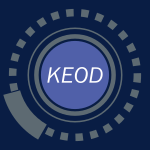 KEOD-2014-Aalst #mining #people #process #what
KEOD-2014-Aalst #mining #people #process #what- No Knowledge Without Processes — Process Mining as a Tool to Find Out What People and Organizations Really Do (WMPvdA), pp. 1–11.
 RecSys-2014-LiuWW #what
RecSys-2014-LiuWW #what- Tell me where to go and what to do next, but do not bother me (HL, GW, GW), pp. 375–376.
 SEKE-2014-HuangCWC #how #interactive #question #testing
SEKE-2014-HuangCWC #how #interactive #question #testing- How to Do Tie-breaking in Prioritization of Interaction Test Suites? (RH, JC, RW, DC), pp. 121–125.
 SIGIR-2014-ZhangZ0LM #bibliography #classification #sentiment
SIGIR-2014-ZhangZ0LM #bibliography #classification #sentiment- Do users rate or review?: boost phrase-level sentiment labeling with review-level sentiment classification (YZ, HZ, MZ, YL, SM), pp. 1027–1030.
 RE-2014-GuzmanM #analysis #fine-grained #how #sentiment
RE-2014-GuzmanM #analysis #fine-grained #how #sentiment- How Do Users Like This Feature? A Fine Grained Sentiment Analysis of App Reviews (EG, WM), pp. 153–162.
 SAC-2014-ShoshitaishviliIDV #analysis #scalability #security #trade-off
SAC-2014-ShoshitaishviliIDV #analysis #scalability #security #trade-off- Do you feel lucky?: a large-scale analysis of risk-rewards trade-offs in cyber security (YS, LI, AD, GV), pp. 1649–1656.
 ICSE-2014-BrindescuCSD #distributed #how #question #version control
ICSE-2014-BrindescuCSD #distributed #how #question #version control- How do centralized and distributed version control systems impact software changes? (CB, MC, SS, DD), pp. 322–333.
 ICSE-2014-EndrikatHRS #api #documentation #how #question #static typing #type system #usability
ICSE-2014-EndrikatHRS #api #documentation #how #question #static typing #type system #usability- How do API documentation and static typing affect API usability? (SE, SH, RR, AS), pp. 632–642.
 ICSE-2014-KhadkaBSJH #how #legacy #question
ICSE-2014-KhadkaBSJH #how #legacy #question- How do professionals perceive legacy systems and software modernization? (RK, BVB, AS, SJ, JH), pp. 36–47.
 ICST-2014-Feldt #question #testing
ICST-2014-Feldt #question #testing- Do System Test Cases Grow Old? (RF), pp. 343–352.
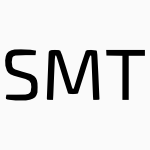 SMT-2014-Barrett #named #question #smt
SMT-2014-Barrett #named #question #smt- SMT: Where do we go from here? (CB), p. 1.
 DAC-2013-FariborziCNCHLLS
DAC-2013-FariborziCNCHLLS- Relays do not leak: CMOS does (HF, FC, RN, IRC, LH, RL, TJKL, VS), p. 4.
 DATE-2013-KazmierskiWAM #energy #optimisation #performance
DATE-2013-KazmierskiWAM #energy #optimisation #performance- DoE-based performance optimization of energy management in sensor nodes powered by tunable energy-harvesters (TJK, LW, BMAH, GVM), p. 484.
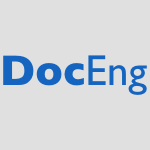 DocEng-2013-FerilliER #documentation #html #multi
DocEng-2013-FerilliER #documentation #html #multi- Hi-Fi HTML rendering of multi-format documents in DoMinUS (SF, FE, DR), pp. 173–176.
 ITiCSE-2013-Buck #approach #reliability
ITiCSE-2013-Buck #approach #reliability- First, do no harm: a curricular approach to reliability (DB), p. 319.
 CSMR-2013-AnicheOG #case study #industrial #open source #quality #testing #what
CSMR-2013-AnicheOG #case study #industrial #open source #quality #testing #what- What Do the Asserts in a Unit Test Tell Us about Code Quality? A Study on Open Source and Industrial Projects (MFA, GAO, MAG), pp. 111–120.
 ICSM-2013-LeTL #fault #locality #theory and practice
ICSM-2013-LeTL #fault #locality #theory and practice- Theory and Practice, Do They Match? A Case with Spectrum-Based Fault Localization (TDBL, FT, DL), pp. 380–383.
 MSR-2013-NadiDTHL #how #linux #question #variability #what
MSR-2013-NadiDTHL #how #linux #question #variability #what- Linux variability anomalies: what causes them and how do they get fixed? (SN, CD, RT, RCH, DL), pp. 111–120.
 MSR-2013-SouzaM #category theory #metric #question
MSR-2013-SouzaM #category theory #metric #question- Do software categories impact coupling metrics? (LBLdS, MdAM), pp. 217–220.
 WCRE-2013-LiXPZ #developer #how #question #what
WCRE-2013-LiXPZ #developer #how #question #what- What help do developers seek, when and how? (HL, ZX, XP, WZ), pp. 142–151.
 WCRE-2013-YamashitaM #bibliography #developer #smell
WCRE-2013-YamashitaM #bibliography #developer #smell- Do developers care about code smells? An exploratory survey (AFY, LM), pp. 242–251.
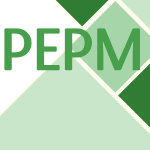 PEPM-2013-MartinezVP #compilation #exclamation #haskell #performance
PEPM-2013-MartinezVP #compilation #exclamation #haskell #performance- Just do it while compiling!: fast extensible records in haskell (BM, MV, AP), pp. 77–86.
 CHI-2013-AnnettB #exclamation #gesture #symmetry
CHI-2013-AnnettB #exclamation #gesture #symmetry- Your left hand can do it too!: investigating intermanual, symmetric gesture transfer on touchscreens (MA, WFB), pp. 1119–1128.
 CHI-2013-KangBK #design #internet #people #policy #why
CHI-2013-KangBK #design #internet #people #policy #why- Why do people seek anonymity on the internet?: informing policy and design (RK, SB, SBK), pp. 2657–2666.
 CHI-2013-KhovanskayaBCVG #approach #design #quote #what
CHI-2013-KhovanskayaBCVG #approach #design #quote #what- “Everybody knows what you’re doing”: a critical design approach to personal informatics (VDK, EPSB, DC, SV, GG), pp. 3403–3412.
 CHI-2013-MarcuTCGRSDK #comprehension #education #why
CHI-2013-MarcuTCGRSDK #comprehension #education #why- Why do they still use paper?: understanding data collection and use in Autism education (GM, KT, QC, JG, GR, KJS, AKD, SBK), pp. 3177–3186.
 CHI-2013-YangPCLNC #design #developer #development #exclamation #tool support
CHI-2013-YangPCLNC #design #developer #development #exclamation #tool support- I can do text analytics!: designing development tools for novice developers (HY, DPW, LC, YL, BN, ACF), pp. 1599–1608.
 CSCW-2013-HemphillOS #question #twitter #what
CSCW-2013-HemphillOS #question #twitter #what- What’s congress doing on twitter? (LH, JO, MS), pp. 877–886.
 DHM-SET-2013-SaparovaBLKMY #health #how #information management #problem #question #usability #what
DHM-SET-2013-SaparovaBLKMY #health #how #information management #problem #question #usability #what- Usability Problems in Patient- and Clinician-Oriented Health Information Systems: What Are They and How Do They Differ? (DS, JB, YL, FK, YM, BY), pp. 276–285.
 HCI-UC-2013-KohPC #people #question
HCI-UC-2013-KohPC #people #question- Do All People Enjoy the Benefits from Technology Innovation? (YJK, JHP, BDC), pp. 402–410.
 ICEIS-J-2013-KahkonenMS #enterprise #integration #question #what
ICEIS-J-2013-KahkonenMS #enterprise #integration #question #what- What Do We Know About ERP Integration? (TK, AM, KS), pp. 51–67.
 CIKM-2013-ChengAH #how #question
CIKM-2013-ChengAH #how #question- How fresh do you want your search results? (SC, AA, VH), pp. 1271–1280.
 KDIR-KMIS-2013-GirdauskieneS #what
KDIR-KMIS-2013-GirdauskieneS #what- Assessing Environmental Dimensions for Creativity and Knowledge Creation — What Features of Task, Group and Time do make an Impact on Creativity and Knowledge Creation in a Creative Organization (LG, AS), pp. 532–538.
 MLDM-2013-YasojimaFBOS #analysis #case study #generative #power management
MLDM-2013-YasojimaFBOS #analysis #case study #generative #power management- Partial Discharge Analysis and Inspection Alert Generation in High Power Transformers: A Case Study of an Autotransformer Bank at Eletrobrás-ELETRONORTE Vila do Conde Station (CTKY, MSF, FdSB, TFdO, AMdS), pp. 367–378.
 SEKE-2013-BassoWPO #how #question #reuse #tool support
SEKE-2013-BassoWPO #how #question #reuse #tool support- How do You Execute Reuse Tasks Among Tools? (FPB, CMLW, RMP, TCO), pp. 721–726.
 SIGIR-2013-JiangJH #fault #how #query
SIGIR-2013-JiangJH #fault #how #query- How do users respond to voice input errors?: lexical and phonetic query reformulation in voice search (JJ, WJ, DH), pp. 143–152.
 ECOOP-2013-TasharofiDJ #concurrent #developer #modelling #question #scala #why
ECOOP-2013-TasharofiDJ #concurrent #developer #modelling #question #scala #why- Why Do Scala Developers Mix the Actor Model with other Concurrency Models? (ST, PD, REJ), pp. 302–326.
 ECOOP-2013-TemperoYN #inheritance #java #what
ECOOP-2013-TemperoYN #inheritance #java #what- What Programmers Do with Inheritance in Java (EDT, HYY, JN), pp. 577–601.
 OOPSLA-2013-HoppeH #comparison #developer #empirical #java
OOPSLA-2013-HoppeH #comparison #developer #empirical #java- Do developers benefit from generic types?: an empirical comparison of generic and raw types in java (MH, SH), pp. 457–474.
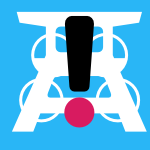 REFSQ-2013-DanevaBH #architecture #case study #experience #quality #question #requirements #what
REFSQ-2013-DanevaBH #architecture #case study #experience #quality #question #requirements #what- Software Architects’ Experiences of Quality Requirements: What We Know and What We Do Not Know? (MD, LB, AH), pp. 1–17.
 SAC-2013-OliveiraBMNBGB #multi #network
SAC-2013-OliveiraBMNBGB #multi #network- DoS-resilient virtual networks through multipath embedding and opportunistic recovery (RRO, LRB, DSM, MCN, LSB, LPG, MPB), pp. 597–602.
 ESEC-FSE-2013-BlincoeVD #coordination #dependence #identification
ESEC-FSE-2013-BlincoeVD #coordination #dependence #identification- Do all task dependencies require coordination? the role of task properties in identifying critical coordination needs in software projects (KB, GV, DD), pp. 213–223.
 SOSP-2013-XuZHZSYZP
SOSP-2013-XuZHZSYZP- Do not blame users for misconfigurations (TX, JZ, PH, JZ, TS, DY, YZ, SP), pp. 244–259.
 DAC-2012-PalemA #exclamation #what
DAC-2012-PalemA #exclamation #what- What to do about the end of Moore’s law, probably! (KVP, LA), pp. 924–929.
 HT-2012-Staab #how
HT-2012-Staab #how- How to do things with triples (SS), pp. 1–2.
 SIGMOD-2012-ZukowskiB #challenge #research
SIGMOD-2012-ZukowskiB #challenge #research- From x100 to vectorwise: opportunities, challenges and things most researchers do not think about (MZ, PAB), pp. 861–862.
 CSEET-2012-BareissS
CSEET-2012-BareissS- A Gentle Introduction to Learn by Doing (RB, TS), pp. 81–84.
 ITiCSE-2012-FidotenS #bibliography #what
ITiCSE-2012-FidotenS #bibliography #what- What do computer scientists do?: a survey of CS and non-CS liberal arts faculty (HF, JS), pp. 279–284.
 CSMR-2012-BernardiCLPD #communication #debugging #developer #eclipse
CSMR-2012-BernardiCLPD #communication #debugging #developer #eclipse- Do Developers Introduce Bugs When They Do Not Communicate? The Case of Eclipse and Mozilla (MLB, GC, GADL, MDP, DD), pp. 139–148.
 ICPC-2012-KleinschmagerHRS #empirical #maintenance #static typing #type system
ICPC-2012-KleinschmagerHRS #empirical #maintenance #static typing #type system- Do static type systems improve the maintainability of software systems? An empirical study (SK, SH, RR, ÉT, AS), pp. 153–162.
 ICSM-2012-HigoK #consistency #detection #how #nondeterminism
ICSM-2012-HigoK #consistency #detection #how #nondeterminism- How often do unintended inconsistencies happen? Deriving modification patterns and detecting overlooked code fragments (YH, SK), pp. 222–231.
 ICSM-2012-HindleBZN #analysis #developer #implementation #question #requirements #topic
ICSM-2012-HindleBZN #analysis #developer #implementation #question #requirements #topic- Relating requirements to implementation via topic analysis: Do topics extracted from requirements make sense to managers and developers? (AH, CB, TZ, NN), pp. 243–252.
 ICSM-2012-KuangMHGHJE #comprehension #dependence #question #requirements #source code #traceability
ICSM-2012-KuangMHGHJE #comprehension #dependence #question #requirements #source code #traceability- Do data dependencies in source code complement call dependencies for understanding requirements traceability? (HK, PM, HH, AG, LH, JL, AE), pp. 181–190.
 ICSM-2012-YamashitaM #aspect-oriented #maintenance #question #smell
ICSM-2012-YamashitaM #aspect-oriented #maintenance #question #smell- Do code smells reflect important maintainability aspects? (AFY, LM), pp. 306–315.
 MSR-2012-ArthoSCTZ #question #why
MSR-2012-ArthoSCTZ #question #why- Why do software packages conflict? (CA, KS, RDC, RT, SZ), pp. 141–150.
 MSR-2012-GuanaRHS #analysis #android #architecture #multi
MSR-2012-GuanaRHS #analysis #android #architecture #multi- Do the stars align? Multidimensional analysis of Android’s layered architecture (VG, FR, AH, ES), pp. 124–127.
 MSR-2012-KhomhDZA #case study #empirical #performance #quality
MSR-2012-KhomhDZA #case study #empirical #performance #quality- Do faster releases improve software quality? An empirical case study of Mozilla Firefox (FK, TD, YZ, BA), pp. 179–188.
 WCRE-2012-CleveH #question #what
WCRE-2012-CleveH #question #what- What Do Foreign Keys Actually Mean? (AC, JLH), pp. 299–307.
 DLT-2012-KutribMW #automaton #finite #multi
DLT-2012-KutribMW #automaton #finite #multi- States and Heads Do Count for Unary Multi-head Finite Automata (MK, AM, MW), pp. 214–225.
 FM-2012-Wassyng #question #what
FM-2012-Wassyng #question #what- Who Are We, and What Are We Doing Here? (AW), pp. 7–9.
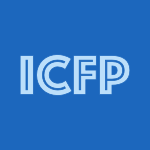 ICFP-2012-PikeWNG #case study #compilation #experience
ICFP-2012-PikeWNG #case study #compilation #experience- Experience report: a do-it-yourself high-assurance compiler (LP, NW, SN, AG), pp. 335–340.
 CHI-2012-BergmanWSNR #how #navigation
CHI-2012-BergmanWSNR #how #navigation- How do we find personal files?: the effect of OS, presentation & depth on file navigation (OB, SW, MS, RN, AR), pp. 2977–2980.
 CHI-2012-BirnholtzBF #behaviour
CHI-2012-BirnholtzBF #behaviour- Do you see that I see?: effects of perceived visibility on awareness checking behavior (JPB, NB, SRF), pp. 1765–1774.
 CHI-2012-CoxCSC #challenge #experience #game studies
CHI-2012-CoxCSC #challenge #experience #game studies- Not doing but thinking: the role of challenge in the gaming experience (ALC, PAC, PS, MC), pp. 79–88.
 CHI-2012-FitchettC #named #predict #what
CHI-2012-FitchettC #named #predict #what- AccessRank: predicting what users will do next (SF, AC), pp. 2239–2242.
 CHI-2012-MatthewsJW #design #experience #how #question #user interface
CHI-2012-MatthewsJW #design #experience #how #question #user interface- How do designers and user experience professionals actually perceive and use personas? (TM, TKJ, SW), pp. 1219–1228.
 CHI-2012-ParkBN #how #question
CHI-2012-ParkBN #how #question- How do couples use CheekTouch over phone calls? (YP, SHB, TJN), pp. 763–766.
 CHI-2012-PetrieP #comparison #interactive #problem #usability #what
CHI-2012-PetrieP #comparison #interactive #problem #usability #what- What do users really care about?: a comparison of usability problems found by users and experts on highly interactive websites (HP, CP), pp. 2107–2116.
 CSCW-2012-KeeganGC #analysis #collaboration #editing #multi #network #statistics #wiki
CSCW-2012-KeeganGC #analysis #collaboration #editing #multi #network #statistics #wiki- Do editors or articles drive collaboration?: multilevel statistical network analysis of wikipedia coauthorship (BK, DG, NSC), pp. 427–436.
 CSCW-2012-Nagar #community #online #process #what
CSCW-2012-Nagar #community #online #process #what- What do you think?: the structuring of an online community as a collective-sensemaking process (YN), pp. 393–402.
 CSCW-2012-WycheG #case study #communication #how #product line #quote
CSCW-2012-WycheG #case study #communication #how #product line #quote- “This is how we do it in my country”: a study of computer-mediated family communication among Kenyan migrants in the United States (SW, REG), pp. 87–96.
 CSCW-2012-XuB #case study #community #interactive #online #scalability #what
CSCW-2012-XuB #case study #community #interactive #online #scalability #what- What do you think?: a case study of benefit, expectation, and interaction in a large online critique community (AX, BPB), pp. 295–304.
 CIKM-2012-MurakamiM #how #people #question #web
CIKM-2012-MurakamiM #how #people #question #web- How do humans distinguish different people with identical names on the web? (HM, YM), pp. 2475–2478.
 CIKM-2012-XinKALH #design #modelling
CIKM-2012-XinKALH #design #modelling- Do ads compete or collaborate?: designing click models with full relationship incorporated (XX, IK, RA, MRL, HH), pp. 1839–1843.
 CIKM-2012-YueJHH #analysis #collaboration #query #web
CIKM-2012-YueJHH #analysis #collaboration #query #web- Where do the query terms come from?: an analysis of query reformulation in collaborative web search (ZY, JJ, SH, DH), pp. 2595–2598.
 ICPR-2012-DaveDG #question
ICPR-2012-DaveDG #question- Do humans fixate on interest points? (AD, RD, BG), pp. 2784–2787.
 ICPR-2012-KumagaiOTYMK #modelling #robust
ICPR-2012-KumagaiOTYMK #modelling #robust- Robust model-based tracking considering changes in the measurable DoF of the target object (KK, MAO, TT, GY, JM, HK), pp. 2157–2160.
 KR-2012-BaralD #automation #how #learning #programming #set
KR-2012-BaralD #automation #how #learning #programming #set- Solving Puzzles Described in English by Automated Translation to Answer Set Programming and Learning How to Do that Translation (CB, JD).
 MoDELS-2012-GravinoRST #comprehension #design pattern #developer #documentation #replication #source code
MoDELS-2012-GravinoRST #comprehension #design pattern #developer #documentation #replication #source code- Do Professional Developers Benefit from Design Pattern Documentation? A Replication in the Context of Source Code Comprehension (CG, MR, GS, GT), pp. 185–201.
 MoDELS-2012-GravinoRST #comprehension #design pattern #developer #documentation #replication #source code
MoDELS-2012-GravinoRST #comprehension #design pattern #developer #documentation #replication #source code- Do Professional Developers Benefit from Design Pattern Documentation? A Replication in the Context of Source Code Comprehension (CG, MR, GS, GT), pp. 185–201.
 ECOOP-2012-RobbesRT #evolution #question
ECOOP-2012-RobbesRT #evolution #question- Extensions during Software Evolution: Do Objects Meet Their Promise? (RR, DR, ÉT), pp. 28–52.
 RE-2012-AmellerACF #architecture #case study #how #non-functional #requirements
RE-2012-AmellerACF #architecture #case study #how #non-functional #requirements- How do software architects consider non-functional requirements: An exploratory study (DA, CPA, JC, XF), pp. 41–50.
 RE-2012-MaglyasNS #question #what
RE-2012-MaglyasNS #question #what- What do practitioners mean when they talk about product management? (AM, UN, KS), pp. 261–266.
 FSE-2012-OkurD #developer #how #library #parallel #question
FSE-2012-OkurD #developer #how #library #parallel #question- How do developers use parallel libraries? (SO, DD), p. 54.
 FSE-2012-RobbesLR #api #developer #ecosystem #how #smalltalk
FSE-2012-RobbesLR #api #developer #ecosystem #how #smalltalk- How do developers react to API deprecation?: the case of a smalltalk ecosystem (RR, ML, DR), p. 56.
 FSE-2012-TaoDXZK #case study #how #industrial
FSE-2012-TaoDXZK #case study #how #industrial- How do software engineers understand code changes?: an exploratory study in industry (YT, YD, TX, DZ, SK), p. 51.
 FSE-2012-WalkerRS #composition #problem #question
FSE-2012-WalkerRS #composition #problem #question- Do crosscutting concerns cause modularity problems? (RJW, SR, JS), p. 49.
 ICSE-2012-Braithwaite #how #industrial #programming #what
ICSE-2012-Braithwaite #how #industrial #programming #what- Software as an engineering material: How the affordances of programming have changed and what to do about it (Invited industrial talk) (KB), p. 998.
 ICSE-2012-RoehmTKM #developer #how #question
ICSE-2012-RoehmTKM #developer #how #question- How do professional developers comprehend software? (TR, RT, RK, WM), pp. 255–265.
 ICST-2012-JustKS #analysis #effectiveness #mutation testing #performance #question
ICST-2012-JustKS #analysis #effectiveness #mutation testing #performance #question- Do Redundant Mutants Affect the Effectiveness and Efficiency of Mutation Analysis? (RJ, GMK, FS), pp. 720–725.
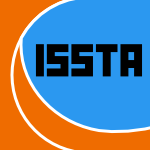 ISSTA-2012-JensenJM
ISSTA-2012-JensenJM- Remedying the eval that men do (SHJ, PAJ, AM), pp. 34–44.
 ASE-2011-MaderE #empirical #navigation #source code #traceability
ASE-2011-MaderE #empirical #navigation #source code #traceability- Do software engineers benefit from source code navigation with traceability? — An experiment in software change management (PM, AE), pp. 444–447.
 DAC-2011-Mador-HaimAM #consistency #how #memory management #modelling #question #testing
DAC-2011-Mador-HaimAM #consistency #how #memory management #modelling #question #testing- Litmus tests for comparing memory consistency models: how long do they need to be? (SMH, RA, MMKM), pp. 504–509.
 SIGMOD-2011-TeubnerM #how
SIGMOD-2011-TeubnerM #how- How soccer players would do stream joins (JT, RM), pp. 625–636.
 VLDB-2011-BenouaretBHB #composition #fuzzy #named #query #web #web service
VLDB-2011-BenouaretBHB #composition #fuzzy #named #query #web #web service- FuDoCS: A Web Service Composition System Based on Fuzzy Dominance for Preference Query Answering (KB, DB, AH, MB), pp. 1430–1433.
 ITiCSE-2011-ChanK
ITiCSE-2011-ChanK- Do educational software systems provide satisfactory learning opportunities for “multi-sensory learning” methodology? (PC, GK), p. 358.
 ITiCSE-2011-Hu #what
ITiCSE-2011-Hu #what- Computational thinking: what it might mean and what we might do about it (CH), pp. 223–227.
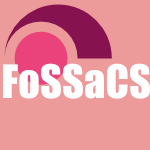 FoSSaCS-2011-AxelsenG #question #source code #what
FoSSaCS-2011-AxelsenG #question #source code #what- What Do Reversible Programs Compute? (HBA, RG), pp. 42–56.
 ICSM-2011-Kemmerer #how #what
ICSM-2011-Kemmerer #how #what- How to steal a botnet and what can happen when you do (RAK), p. 1.
 MSR-2011-BernardiSZDP #question #topic #what
MSR-2011-BernardiSZDP #question #topic #what- What topics do Firefox and Chrome contributors discuss? (MLB, CS, QZ, DD, MDP), pp. 234–237.
 MSR-2011-BhattacharyaN #debugging #modelling #predict #question
MSR-2011-BhattacharyaN #debugging #modelling #predict #question- Bug-fix time prediction models: can we do better? (PB, IN), pp. 207–210.
 MSR-2011-EyolfsonTL #commit #debugging #developer #experience
MSR-2011-EyolfsonTL #commit #debugging #developer #experience- Do time of day and developer experience affect commit bugginess (JE, LT, PL), pp. 153–162.
 MSR-2011-HirataM
MSR-2011-HirataM- Do comments explain codes adequately?: investigation by text filtering (YH, OM), pp. 242–245.
 MSR-2011-PaganoM #case study #developer #how
MSR-2011-PaganoM #case study #developer #how- How do developers blog?: an exploratory study (DP, WM), pp. 123–132.
 WCRE-2011-PosnettHD #fault #question
WCRE-2011-PosnettHD #fault #question- Got Issues? Do New Features and Code Improvements Affect Defects? (DP, AH, PTD), pp. 211–215.
 PLDI-2011-RamanKOLA #distributed #parallel #using
PLDI-2011-RamanKOLA #distributed #parallel #using- Parallelism orchestration using DoPE: the degree of parallelism executive (AR, HK, TO, JWL, DIA), pp. 26–37.
 STOC-2011-GolabHW #distributed #implementation #random
STOC-2011-GolabHW #distributed #implementation #random- Linearizable implementations do not suffice for randomized distributed computation (WMG, LH, PW), pp. 373–382.
 ICFP-2011-GibbonsH #equation #monad #reasoning
ICFP-2011-GibbonsH #equation #monad #reasoning- Just do it: simple monadic equational reasoning (JG, RH), pp. 2–14.
 CHI-2011-DabbishMG #self #why
CHI-2011-DabbishMG #self #why- Why do i keep interrupting myself?: environment, habit and self-interruption (LD, GM, VMG), pp. 3127–3130.
 CHI-2011-DasFS #design #interactive #question
CHI-2011-DasFS #design #interactive #question- Interaction design for cancer patients: do we need to take into account the effects of illness and medication? (AD, AF, DS), pp. 21–24.
 CHI-2011-LaquaSGG #case study #information management
CHI-2011-LaquaSGG #case study #information management- Do you know dis?: a user study of a knowledge discovery tool for organizations (SL, MAS, SG, CG), pp. 2887–2896.
 CHI-2011-SchwindBH #recommendation
CHI-2011-SchwindBH #recommendation- I will do it, but i don’t like it: user reactions to preference-inconsistent recommendations (CS, JB, FWH), pp. 349–352.
 CHI-2011-YeeDYN
CHI-2011-YeeDYN- Do men heal more when in drag?: conflicting identity cues between user and avatar (NY, ND, MY, LN), pp. 773–776.
 CSCW-2011-GuyURPJ #enterprise #recommendation
CSCW-2011-GuyURPJ #enterprise #recommendation- Do you want to know?: recommending strangers in the enterprise (IG, SU, IR, AP, MJ), pp. 285–294.
 DUXU-v1-2011-TurnerC #interface #question
DUXU-v1-2011-TurnerC #interface #question- Phone Use and Aging: Do Spatial Interface Metaphors Help? (MT, RC), pp. 678–686.
 HCI-DDA-2011-KallinenER #difference #multi
HCI-DDA-2011-KallinenER #difference #multi- Individual Differences in Work Load While Doing Multitasking with a Computer (KK, IE, NR), pp. 351–358.
 HCI-DDA-2011-ZimmermanKPBLJ #how #performance #quote
HCI-DDA-2011-ZimmermanKPBLJ #how #performance #quote- “How Do I Line Up?”: Reducing Mental Transformations to Improve Performance (GWZ, DSK, GMP, JB, LML, SDJ), pp. 432–440.
 HCI-ITE-2011-UllahLORM #case study #collaboration #distributed #interactive #what
HCI-ITE-2011-UllahLORM #case study #collaboration #distributed #interactive #what- What You Feel Is What I Do: A Study of Dynamic Haptic Interaction in Distributed Collaborative Virtual Environment (SU, XL, SO, PR, MM), pp. 140–147.
 HCI-UA-2011-Furukawa #design #injection #question #what
HCI-UA-2011-Furukawa #design #injection #question #what- What Label Design of Ampule for Injection, Do You Want? (HF), pp. 159–166.
 HIMI-v1-2011-TakeuchiN #how #question
HIMI-v1-2011-TakeuchiN #how #question- How Do Real or Virtual Agent’s Body and Instructions Contribute to Task Achievement? (YT, HN), pp. 142–151.
 IDGD-2011-KreifeldtLC #design
IDGD-2011-KreifeldtLC #design- The Importance of “Feel” in Product Design Feel, the Neglected Aesthetic “DO NOT TOUCH” (JK, RL, MCC), pp. 312–321.
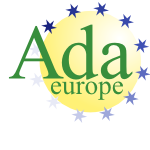 AdaEurope-2011-ChapmanJ
AdaEurope-2011-ChapmanJ- OOT, DO-178C and SPARK (RC, TJ), pp. 206–210.
 AdaEurope-2011-Daniels #object-oriented
AdaEurope-2011-Daniels #object-oriented- Position Paper: DO-178C/ED-12C and Object-Orientation for Critical Systems (DD), pp. 211–213.
 SIGAda-2011-Brosgol #named #safety #standard
SIGAda-2011-Brosgol #named #safety #standard- Do-178c: the next avionics safety standard (BMB), pp. 5–6.
 CIKM-2011-FuLZZ #learning #query
CIKM-2011-FuLZZ #learning #query- Do they belong to the same class: active learning by querying pairwise label homogeneity (YF, BL, XZ, CZ), pp. 2161–2164.
 CIKM-2011-PobleteGMJ #twitter
CIKM-2011-PobleteGMJ #twitter- Do all birds tweet the same?: characterizing twitter around the world (BP, ROGG, MM, AJ), pp. 1025–1030.
 KDD-2011-McCue #security
KDD-2011-McCue #security- Operational security analytics: doing more with less (CM), p. 782.
 SIGIR-2011-ClinchantG #constraints #information retrieval #modelling
SIGIR-2011-ClinchantG #constraints #information retrieval #modelling- Do IR models satisfy the TDC retrieval constraint (SC, ÉG), pp. 1155–1156.
 ECOOP-2011-RichardsHBV #javascript #scalability
ECOOP-2011-RichardsHBV #javascript #scalability- The Eval That Men Do — A Large-Scale Study of the Use of Eval in JavaScript Applications (GR, CH, BB, JV), pp. 52–78.
 OOPSLA-2011-SonMS #named #security #what
OOPSLA-2011-SonMS #named #security #what- RoleCast: finding missing security checks when you do not know what checks are (SS, KSM, VS), pp. 1069–1084.
 PLATEAU-2011-GilGM #how #metric #question
PLATEAU-2011-GilGM #how #metric #question- How much information do software metrics contain? (JYG, MG, DM), pp. 57–64.
 RE-2011-Waldmann #agile #constraints #development #requirements #what
RE-2011-Waldmann #agile #constraints #development #requirements #what- There’s never enough time: Doing requirements under resource constraints, and what requirements engineering can learn from agile development (BW), pp. 301–305.
 ESEC-FSE-2011-YinYZPB #debugging #how #question
ESEC-FSE-2011-YinYZPB #debugging #how #question- How do fixes become bugs? (ZY, DY, YZ, SP, LNB), pp. 26–36.
 ICSE-2011-TreudeBS #how #question #web
ICSE-2011-TreudeBS #how #question #web- How do programmers ask and answer questions on the web? (CT, OB, MADS), pp. 804–807.
 SOSP-2011-ColpNZACDLW #security
SOSP-2011-ColpNZACDLW #security- Breaking up is hard to do: security and functionality in a commodity hypervisor (PC, MN, JZ, WA, GC, TD, PL, AW), pp. 189–202.
 SIGMOD-2010-ZhouCC #named #prototype #query #type system
SIGMOD-2010-ZhouCC #named #prototype #query #type system- DoCQS: a prototype system for supporting data-oriented content query (MZ, TC, KCCC), pp. 1211–1214.
 ITiCSE-2010-GurselG #student #what
ITiCSE-2010-GurselG #student #what- What do promising high school students think about studying computing (DAG, BG), p. 325.
 ITiCSE-2010-MainFH #quantum #student #what
ITiCSE-2010-MainFH #quantum #student #what- What did qubits ever do for me: an answer for CS2 students (MM, RF, YH), pp. 209–213.
 MSR-2010-SchroterBP #debugging #developer #question #stack
MSR-2010-SchroterBP #debugging #developer #question #stack- Do stack traces help developers fix bugs? (AS, NB, RP), pp. 118–121.
 SAS-2010-Lesens #question #static analysis #using #why
SAS-2010-Lesens #question #static analysis #using #why- Using Static Analysis in Space: Why Doing so? (DL), pp. 51–70.
 CHI-2010-DearmanT #exclamation #why
CHI-2010-DearmanT #exclamation #why- Why users of yahoo!: answers do not answer questions (DD, KNT), pp. 329–332.
 CHI-2010-HartmannMBK #error message #fault #what
CHI-2010-HartmannMBK #error message #fault #what- What would other programmers do: suggesting solutions to error messages (BH, DM, JB, SRK), pp. 1019–1028.
 CHI-2010-MorrisTP #behaviour #bibliography #network #people #social #what #why
CHI-2010-MorrisTP #behaviour #bibliography #network #people #social #what #why- What do people ask their social networks, and why?: a survey study of status message q&a behavior (MRM, JT, KP), pp. 1739–1748.
 CHI-2010-Thom-SantelliCG #collaboration #what
CHI-2010-Thom-SantelliCG #collaboration #what- What do you know?: experts, novices and territoriality in collaborative systems (JTS, DC, GG), pp. 1685–1694.
 CSCW-2010-LeeKF #how #people #question
CSCW-2010-LeeKF #how #people #question- Receptionist or information kiosk: how do people talk with a robot? (MKL, SBK, JF), pp. 31–40.
 ICEIS-HCI-2010-PereiraBS #question #social #why
ICEIS-HCI-2010-PereiraBS #question #social #why- A Framework-informed Discussion on Social Software — Why Some Social Software Fail and Others do Not? (RP, MCCB, SRPdS), pp. 149–154.
 ICML-2010-PoonZCW #clustering #modelling
ICML-2010-PoonZCW #clustering #modelling- Variable Selection in Model-Based Clustering: To Do or To Facilitate (LKMP, NLZ, TC, YW), pp. 887–894.
 RecSys-2010-ZhengWZLY #case study #empirical #recommendation
RecSys-2010-ZhengWZLY #case study #empirical #recommendation- Do clicks measure recommendation relevancy?: an empirical user study (HZ, DW, QZ, HL, TY), pp. 249–252.
 SEKE-2010-AlhassanCB #analysis #fault #network #people #social
SEKE-2010-AlhassanCB #analysis #fault #network #people #social- Do More People Make the Code More Defect Prone?: Social Network Analysis in OSS Projects (SA, BC, ABB), pp. 93–98.
 SIGIR-2010-SandersonPCK #evaluation #metric #question
SIGIR-2010-SandersonPCK #evaluation #metric #question- Do user preferences and evaluation measures line up? (MS, MLP, PDC, EK), pp. 555–562.
 OOPSLA-2010-ShiPYLZCZ #concurrent #debugging #detection #invariant
OOPSLA-2010-ShiPYLZCZ #concurrent #debugging #detection #invariant- Do I use the wrong definition?: DeFuse: definition-use invariants for detecting concurrency and sequential bugs (YS, SP, ZY, SL, YZ, WC, WZ), pp. 160–174.
 RE-2010-Beatty #question #what
RE-2010-Beatty #question #what- My Company Can’t Afford RE Training Right Now, What Do We Do? (JB), p. 387.
 RE-2010-RachevaDSHW #agile #case study #requirements
RE-2010-RachevaDSHW #agile #case study #requirements- Do We Know Enough about Requirements Prioritization in Agile Projects: Insights from a Case Study (ZR, MD, KS, AH, RW), pp. 147–156.
 REFSQ-2010-AmellerF #architecture #bibliography #how #non-functional #requirements
REFSQ-2010-AmellerF #architecture #bibliography #how #non-functional #requirements- How Do Software Architects Consider Non-Functional Requirements: A Survey (DA, XF), pp. 276–277.
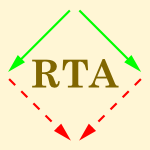 RTA-2010-NeurauterM #integer #polynomial
RTA-2010-NeurauterM #integer #polynomial- Polynomial Interpretations over the Reals do not Subsume Polynomial Interpretations over the Integers (FN, AM), pp. 243–258.
 DAC-2009-VenerisS
DAC-2009-VenerisS- The day Sherlock Holmes decided to do EDA (AGV, SS), pp. 631–634.
 DAC-2009-YingKKGGOTW #how #question
DAC-2009-YingKKGGOTW #how #question- Guess, solder, measure, repeat: how do I get my mixed-signal chip right? (GY, AK, KSK, GGEG, EG, MO, ST, WW), pp. 520–521.
 ITiCSE-2009-MitchellPH #question #what
ITiCSE-2009-MitchellPH #question #what- Computing science: what do pupils think? (AM, HCP, JH), p. 353.
 ITiCSE-2009-WiesnerB #concept #how #learning #question
ITiCSE-2009-WiesnerB #concept #how #learning #question- How do robots foster the learning of basic concepts in informatics? (BW, TB), p. 403.
 WRLA-2008-HolzlMW09 #constraints #question
WRLA-2008-HolzlMW09 #constraints #question- Which Soft Constraints do you Prefer? (MMH, MM, MW), pp. 189–205.
 ICSM-2009-JiaSYL #data transformation #difference #predict #question #set
ICSM-2009-JiaSYL #data transformation #difference #predict #question #set- Data transformation and attribute subset selection: Do they help make differences in software failure prediction? (HJ, FS, YY, QL), pp. 519–522.
 MSR-2009-MaalejH #developer #how #question #word
MSR-2009-MaalejH #developer #how #question #word- From work to word: How do software developers describe their work? (WM, HJH), pp. 121–130.
 WCRE-1999-PentaG99a #how #question #source code
WCRE-1999-PentaG99a #how #question #source code- Who are Source Code Contributors and How do they Change? (MDP, DMG), pp. 11–20.
 ICFP-2009-VieraSS #aspect-oriented #attribute grammar #haskell #how #programming
ICFP-2009-VieraSS #aspect-oriented #attribute grammar #haskell #how #programming- Attribute grammars fly first-class: how to do aspect oriented programming in Haskell (MV, SDS, WS), pp. 245–256.
 CHI-2009-BruunGHS #comparison #testing #usability
CHI-2009-BruunGHS #comparison #testing #usability- Let your users do the testing: a comparison of three remote asynchronous usability testing methods (AB, PG, LH, JS), pp. 1619–1628.
 CHI-2009-BuscherCM #eye tracking #predict #using #web #what
CHI-2009-BuscherCM #eye tracking #predict #using #web #what- What do you see when you’re surfing?: using eye tracking to predict salient regions of web pages (GB, EC, MRM), pp. 21–30.
 CHI-2009-MaC #communication #how #question #visual notation
CHI-2009-MaC #communication #how #question #visual notation- How well do visual verbs work in daily communication for young and old adults? (XM, PRC), pp. 361–364.
 CHI-2009-TakayamaGN #aspect-oriented #social
CHI-2009-TakayamaGN #aspect-oriented #social- I’m sorry, Dave: I’m afraid i won’t do that: social aspects of human-agent conflict (LT, VG, CN), pp. 2099–2108.
 HCD-2009-PylaHPASH #case study #evaluation #experience #how
HCD-2009-PylaHPASH #case study #evaluation #experience #how- “How Do I Evaluate THAT?” Experiences from a Systems-Level Evaluation Effort (PSP, HRH, MAPQ, JDA, TLSJ, DH), pp. 292–301.
 HCD-2009-Vartiainen #collaboration #how #multi #question
HCD-2009-Vartiainen #collaboration #how #multi #question- Working in Multi-locational Office — How Do Collaborative Working Environments Support? (MV), pp. 1090–1098.
 HCI-NT-2009-GuoPS #what
HCI-NT-2009-GuoPS #what- What Do Users Want to See? A Content Preparation Study for Consumer Electronics (YG, RWP, GS), pp. 413–420.
 HCI-NT-2009-Lew #experience #what
HCI-NT-2009-Lew #experience #what- What Do Users Really Do? Experience Sampling in the 21st Century (GSL), pp. 314–319.
 IDGD-2009-EugeneHMBRL #authentication #design #process #what
IDGD-2009-EugeneHMBRL #authentication #design #process #what- This Is Who I Am and This Is What I Do: Demystifying the Process of Designing Culturally Authentic Technology (WE, LH, KM, QB, YAR, SL), pp. 19–28.
 IDGD-2009-Gould09a #people #question #usability
IDGD-2009-Gould09a #people #question #usability- Intercultural Usability Surveys: Do People Always Tell “The Truth”? (EWG), pp. 254–258.
 SIGAda-2009-Chelini #towards
SIGAda-2009-Chelini #towards- Working towards DO-178C/ED-12C, DO-248C/ED-94C, and DO-278A/ED109A (JC), pp. 103–104.
 ICML-2009-PoczosASGS #exclamation #learning
ICML-2009-PoczosASGS #exclamation #learning- Learning when to stop thinking and do something! (BP, YAY, CS, RG, NRS), pp. 825–832.
 SAC-2009-TupakulaVP #named
SAC-2009-TupakulaVP #named- DoSTRACK: a system for defending against DoS attacks (UKT, VV, SRP), pp. 47–53.
 ICSE-2009-JurgensDHW #matter #question
ICSE-2009-JurgensDHW #matter #question- Do code clones matter? (EJ, FD, BH, SW), pp. 485–495.
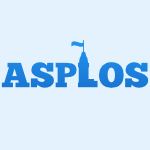 ASPLOS-2009-MytkowiczDHS #exclamation
ASPLOS-2009-MytkowiczDHS #exclamation- Producing wrong data without doing anything obviously wrong! (TM, AD, MH, PFS), pp. 265–276.
 ECSA-2008-MendezA #architecture #comparison #how
ECSA-2008-MendezA #architecture #comparison #how- How Do Agents Affect Modifiability? A Comparison between Two Architectures for Intelligent Virtual Environments for Training (GM, AdA), pp. 82–97.
 DAC-2008-Haensch #3d #integration #question #why
DAC-2008-Haensch #3d #integration #question #why- Why should we do 3D integration? (WH), pp. 674–675.
 SIGMOD-2008-TataL #keyword #named
SIGMOD-2008-TataL #keyword #named- SQAK: doing more with keywords (ST, GML), pp. 889–902.
 CSEET-2008-Cowling #question #student
CSEET-2008-Cowling #question #student- Where Do Students Look for Information? (AJC), pp. 207–214.
 ITiCSE-2008-KiesmullerB #algorithm #analysis #how #problem
ITiCSE-2008-KiesmullerB #algorithm #analysis #how #problem- How do 7th graders solve algorithmic problems?: a tool-based analysis (UK, TB), p. 353.
 CSMR-2008-KhomhG #design pattern #quality #question
CSMR-2008-KhomhG #design pattern #quality #question- Do Design Patterns Impact Software Quality Positively? (FK, YGG), pp. 274–278.
 ICPC-2008-Quante #comprehension #empirical #graph #process
ICPC-2008-Quante #comprehension #empirical #graph #process- Do Dynamic Object Process Graphs Support Program Understanding? — A Controlled Experiment (JQ), pp. 73–82.
 MSR-2008-HindleGH #commit #scalability #what
MSR-2008-HindleGH #commit #scalability #what- What do large commits tell us?: a taxonomical study of large commits (AH, DMG, RCH), pp. 99–108.
 CHI-2008-BalakrishnanFK #collaboration #question #visualisation
CHI-2008-BalakrishnanFK #collaboration #question #visualisation- Do visualizations improve synchronous remote collaboration? (ADB, SRF, SBK), pp. 1227–1236.
 CHI-2008-ChauMF #what
CHI-2008-ChauMF #what- What to do when search fails: finding information by association (DHC, BAM, AF), pp. 999–1008.
 CHI-2008-EliasEFH
CHI-2008-EliasEFH- Do I live in a flood basin?: synthesizing ten thousand maps (ME, JE, DF, JH), pp. 255–264.
 SIGAda-2008-Tokar #question #years after
SIGAda-2008-Tokar #question #years after- 30 years after steelman, does DoD still have a software crisis? (JT), pp. 9–10.
 ICEIS-ISAS1-2008-OhgrenS #bibliography #enterprise #ontology
ICEIS-ISAS1-2008-OhgrenS #bibliography #enterprise #ontology- Do SME Need Ontologies? — Results from a Survey among Small and Medium-sized Enterprises (AÖ, KS), pp. 104–111.
 ICEIS-SAIC-2008-BninaCNA #question #trust #what
ICEIS-SAIC-2008-BninaCNA #question #trust #what- What Can Context Do for Trust in Manets? (EBB, OC, CTN, HKBA), pp. 133–141.
 KR-2008-SchroderP #how #logic #strict
KR-2008-SchroderP #how #logic #strict- How Many Toes Do I Have? Parthood and Number Restrictions in Description Logics (LS, DP), pp. 307–317.
 SIGIR-2008-LinS #automation #evaluation #how #simulation #towards
SIGIR-2008-LinS #automation #evaluation #how #simulation #towards- How do users find things with PubMed?: towards automatic utility evaluation with user simulations (JJL, MDS), pp. 19–26.
 ECOOP-2008-TemperoNM #empirical #how #inheritance #java #source code
ECOOP-2008-TemperoNM #empirical #how #inheritance #java #source code- How Do Java Programs Use Inheritance? An Empirical Study of Inheritance in Java Software (EDT, JN, HM), pp. 667–691.
 CC-2008-ZhaoRARW #debugging #how #performance #using
CC-2008-ZhaoRARW #debugging #how #performance #using- How to Do a Million Watchpoints: Efficient Debugging Using Dynamic Instrumentation (QZ, RMR, SPA, LR, WFW), pp. 147–162.
 TAP-2008-WeyukerO #fault #predict #question #what
TAP-2008-WeyukerO #fault #predict #question #what- What Can Fault Prediction Do for YOU? (EJW, TJO), pp. 18–29.
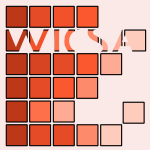 WICSA-2007-FalessiCK #architecture #design #question
WICSA-2007-FalessiCK #architecture #design #question- Do Architecture Design Methods Meet Architects’ Needs? (DF, GC, PK), p. 5.
 VLDB-2007-Amer-YahiaH #database #question #web #what
VLDB-2007-Amer-YahiaH #database #question #web #what- What does Web 2.0 have to do with databases? (SAY, AYH), p. 1443.
 ITiCSE-2007-WhaleyG #case study #design #experience #student
ITiCSE-2007-WhaleyG #case study #design #experience #student- Do students know best?: experiences of allowing students to become course designers (HW, SG), p. 330.
 WCRE-2007-FluriWG #source code
WCRE-2007-FluriWG #source code- Do Code and Comments Co-Evolve? On the Relation between Source Code and Comment Changes (BF, MW, HG), pp. 70–79.
 DLT-2007-Kunc #equation #question #what
DLT-2007-Kunc #equation #question #what- What Do We Know About Language Equations? (MK), pp. 23–27.
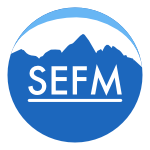 SEFM-2007-CastroM #fault tolerance #logic #reasoning
SEFM-2007-CastroM #fault tolerance #logic #reasoning- An ought-to-do deontic logic for reasoning about fault-tolerance: the diarrheic philosophers (PFC, TSEM), pp. 151–160.
 SEFM-2007-KumarG #modelling #validation
SEFM-2007-KumarG #modelling #validation- Recovery from DoS Attacks in MIPv6: Modeling and Validation (MCK, KG), pp. 205–214.
 CHI-2007-SellenFAHRW #case study #memory management #using
CHI-2007-SellenFAHRW #case study #memory management #using- Do life-logging technologies support memory for the past?: an experimental study using sensecam (AS, AF, MA, SH, CR, KRW), pp. 81–90.
 HCI-MIE-2007-BaranDC #approach #eye tracking #how #problem
HCI-MIE-2007-BaranDC #approach #eye tracking #how #problem- How Do Adults Solve Digital Tangram Problems? Analyzing Cognitive Strategies Through Eye Tracking Approach (BB, BD, KÇ), pp. 555–563.
 HIMI-MTT-2007-KarshEAHSMPSAKSB #case study #predict #quality
HIMI-MTT-2007-KarshEAHSMPSAKSB #case study #predict #quality- Do Beliefs About Hospital Technologies Predict Nurses’ Perceptions of Their Ability to Provide Quality Care? A Study in Two Pediatric Hospitals (BTK, KE, SA, RJH, MS, KM, NP, TS, JA, RK, KS, RLB), pp. 77–83.
 OCSC-2007-Bickmore #lessons learnt #smarttech #social #what
OCSC-2007-Bickmore #lessons learnt #smarttech #social #what- What Would Jiminy Cricket Do? Lessons from the First Social Wearable (TWB), pp. 12–21.
 ICEIS-DISI-2007-AntoniouGA #documentation #enterprise
ICEIS-DISI-2007-AntoniouGA #documentation #enterprise- Doing things right or doing the right things? Proposing a documentation scheme for small to medium enterprises (JA, PG, ASA), pp. 408–414.
 SEKE-2007-AlencarWSF #deployment #game studies #information management #question
SEKE-2007-AlencarWSF #deployment #game studies #information management #question- Do Neural-Network Question-Answering Systems Have a Role to Play in the Deployment of Real World Information Systems? (AJA, RCW, EAS, ALF), pp. 386–391.
 SIGIR-2007-JonesBDE #evaluation #information retrieval #music
SIGIR-2007-JonesBDE #evaluation #information retrieval #music- A “do-it-yourself” evaluation service for music information retrieval systems (MCJ, MB, JSD, AFE), p. 913.
 SIGIR-2007-LinYC #question #what
SIGIR-2007-LinYC #question #what- What emotions do news articles trigger in their readers? (KHYL, CY, HHC), pp. 733–734.
 MoDELS-2007-ZoughbiBL #safety #uml
MoDELS-2007-ZoughbiBL #safety #uml- A UML Profile for Developing Airworthiness-Compliant (RTCA DO-178B), Safety-Critical Software (GZ, LCB, YL), pp. 574–588.
 MoDELS-2007-ZoughbiBL #safety #uml
MoDELS-2007-ZoughbiBL #safety #uml- A UML Profile for Developing Airworthiness-Compliant (RTCA DO-178B), Safety-Critical Software (GZ, LCB, YL), pp. 574–588.
 POPL-2007-CookGPRV #proving #source code
POPL-2007-CookGPRV #proving #source code- Proving that programs eventually do something good (BC, AG, AP, AR, MYV), pp. 265–276.
 RE-2007-ArandaEW #how #requirements
RE-2007-ArandaEW #how #requirements- Requirements in the wild: How small companies do it (JA, SME, GW), pp. 39–48.
 RE-2007-Jacobson #process
RE-2007-Jacobson #process- Enough of RE Processes — Let’s Do Practices (IJ).
 SAC-2007-Savoy #topic #why
SAC-2007-Savoy #topic #why- Why do successful search systems fail for some topics (JS), pp. 872–877.
 ICSE-2007-NgCCY #design pattern #effectiveness #maintenance #question
ICSE-2007-NgCCY #design pattern #effectiveness #maintenance #question- Do Maintainers Utilize Deployed Design Patterns Effectively? (THN, SCC, WKC, YTY), pp. 168–177.
 CSEET-2006-FornaroHT #design #student #what
CSEET-2006-FornaroHT #design #student #what- What Clients Want — What Students Do: Reflections on Ten Years of Sponsored Senior Design Projects (RJF, MRH, ALT), pp. 226–236.
 ITiCSE-2006-ChenLMSS #question #student #what
ITiCSE-2006-ChenLMSS #question #student #what- What do beginning students know, and what can they do? (TYC, GL, RM, KS, BS), p. 329.
 CHI-2006-WuMG #question #security
CHI-2006-WuMG #question #security- Do security toolbars actually prevent phishing attacks? (MW, RCM, SLG), pp. 601–610.
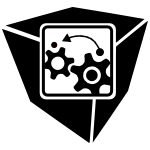 SOFTVIS-2006-VoineaT06a #how #question
SOFTVIS-2006-VoineaT06a #how #question- How do changes in buggy Mozilla files propagate? (LV, ACT), pp. 147–148.
 CAiSE-2006-HaggmarkA #analysis #logic #principle #why
CAiSE-2006-HaggmarkA #analysis #logic #principle #why- Why Software Engineers Do Not Keep to the Principle of Separating Business Logic from Display: A Method Rationale Analysis (MH, PJÅ), pp. 399–413.
 ICEIS-DISI-2006-Jain #how #question #recognition
ICEIS-DISI-2006-Jain #how #question #recognition- Biometric Recognition: How Do I Know Who You Are? (AKJ), pp. 17–18.
 ICPR-v3-2006-Sepp #3d #performance
ICPR-v3-2006-Sepp #3d #performance- Efficient Tracking in 6-DoF based on the Image-Constancy Assumption in 3-D (WS), pp. 59–62.
 SEKE-2006-ChiYL #how #question #web
SEKE-2006-ChiYL #how #question #web- Web Object Cacheability How Much Do We Know? (CHC, JLY, LL), pp. 252–255.
 SIGIR-2006-TrotmanL06a #query #why
SIGIR-2006-TrotmanL06a #query #why- Why structural hints in queries do not help XML-retrieval (AT, ML), pp. 711–712.
 SAC-2006-SchiavoniQ #architecture #component #programming #tool support
SAC-2006-SchiavoniQ #architecture #component #programming #tool support- A posteriori defensive programming: an annotation toolkit for DoS-resistant component-based architectures (VS, VQ), pp. 1734–1738.
 ICSE-2006-MikulovicH #communication #development #distributed #how #quote #requirements #what
ICSE-2006-MikulovicH #communication #development #distributed #how #quote #requirements #what- “How do I know what I have to do?”: the role of the inquiry culture in requirements communication for distributed software development projects (VM, MH), pp. 921–925.
 ISSTA-2006-CobleighAC #composition #reasoning
ISSTA-2006-CobleighAC #composition #reasoning- Breaking up is hard to do: an investigation of decomposition for assume-guarantee reasoning (JMC, GSA, LAC), pp. 97–108.
 DAC-2005-Rossi #design #formal method #question #scalability #verification
DAC-2005-Rossi #design #formal method #question #scalability #verification- Can we really do without the support of formal methods in the verification of large designs? (UR), pp. 672–673.
 ICDAR-2005-AblameykoBP #what
ICDAR-2005-AblameykoBP #what- . What Should the User Do? Inference Structures and Line Drawing Interpretation (SA, VB, TPP), pp. 760–764.
 SIGMOD-2005-LakshmananNR
SIGMOD-2005-LakshmananNR- To Do or Not To Do: The Dilemma of Disclosing Anonymized Data (LVSL, RTN, GR), pp. 61–72.
 ITiCSE-2005-Barker #experience #question #student
ITiCSE-2005-Barker #experience #question #student- When do group projects widen the student experience gap? (LJB), pp. 276–280.
 ITiCSE-2005-MurphyT #data type #student #what
ITiCSE-2005-MurphyT #data type #student #what- Do computer science students know what they know?: a calibration study of data structure knowledge (LM, JDT), pp. 148–152.
 MSR-2005-SliwerskiZZ #question
MSR-2005-SliwerskiZZ #question- When do changes induce fixes? (JŚ, TZ, AZ), pp. 41–45.
 STOC-2005-BojanczykC #automaton #regular expression
STOC-2005-BojanczykC #automaton #regular expression- Tree-walking automata do not recognize all regular languages (MB, TC), pp. 234–243.
 SEFM-2005-Chalin #logic #question #what
SEFM-2005-Chalin #logic #question #what- Logical Foundations of Program Assertions: What do Practitioners Want? (PC), pp. 383–393.
 CHI-2005-CarterM
CHI-2005-CarterM- When participants do the capturing: the role of media in diary studies (SC, JM), pp. 899–908.
 CHI-2005-OviattLC #difference #integration #multimodal #question #what #why
CHI-2005-OviattLC #difference #integration #multimodal #question #what #why- Individual differences in multimodal integration patterns: what are they and why do they exist? (SLO, RL, RC), pp. 241–249.
 SIGIR-2005-McKeownPENH #question #summary
SIGIR-2005-McKeownPENH #question #summary- Do summaries help? (KM, RJP, DKE, AN, JH), pp. 210–217.
 RE-2005-BerryDFGHW #question #requirements #why
RE-2005-BerryDFGHW #question #requirements #why- To do or not to do: If the requirements engineering payoff is so good, why aren’t more companies doing it? (DMB, DD, AF, DCG, RH, AW), p. 447.
 RE-2005-EasterbrookYAFHLQ #case study #concept #modelling
RE-2005-EasterbrookYAFHLQ #case study #concept #modelling- Do Viewpoints Lead to Better Conceptual Models? An Exploratory Case Study (SME, ESKY, JA, YF, JH, ML, RAQ), pp. 199–208.
 RE-2005-RegevW #requirements
RE-2005-RegevW #requirements- Where do Goals Come from: the Underlying Principles of Goal-Oriented Requirements Engineering (GR, AW), pp. 353–362.
 ICSE-2005-BlahaMSSV #ambiguity #design #multi #student
ICSE-2005-BlahaMSSV #ambiguity #design #multi #student- Do students recognize ambiguity in software design? a multi-national, multi-institutional report (KB, AEM, DS, BS, TV), pp. 615–616.
 ICSE-2005-JacksonZ #question
ICSE-2005-JacksonZ #question- Where do you go when you’re through the turnstile? (MJ, PZ), p. 44.
 CADE-2005-Dowek #consistency #question #what
CADE-2005-Dowek #consistency #question #what- What Do We Know When We Know That a Theory Is Consistent? (GD), pp. 1–6.
 DAC-2004-LiuPP #library #power management #question #what
DAC-2004-LiuPP #library #power management #question #what- Practical repeater insertion for low power: what repeater library do we need? (XL, YP, MCP), pp. 30–35.
 DATE-v1-2004-SciutoMRSGFS #question
DATE-v1-2004-SciutoMRSGFS #question- SystemC and SystemVerilog: Where do They Fit? Where are They Going? (DS, GM, WR, SS, FG, PF, JS), pp. 122–129.
 ITiCSE-2004-Ben-AriBBH #education #question #research #what
ITiCSE-2004-Ben-AriBBH #education #question #research #what- What do we mean by theoretically sound research in computer science education? (MBA, AB, SB, CH), pp. 230–231.
 ITiCSE-2004-Ginat04a #question #recursion #student
ITiCSE-2004-Ginat04a #question #recursion #student- Do senior CS students capitalize on recursion? (DG), pp. 82–86.
 ICALP-2004-Hofmann #logic #question #type system #what
ICALP-2004-Hofmann #logic #question #type system #what- What Do Program Logics and Type Systems Have in Common? (MH0), pp. 4–7.
 CHI-2004-BellottiDGFBD #design #towards #what
CHI-2004-BellottiDGFBD #design #towards #what- What a to-do: studies of task management towards the design of a personal task list manager (VB, BD, NG, PF, DGB, ND), pp. 735–742.
 ICEIS-v5-2004-JantkeLGGTT #data mining #learning #mining
ICEIS-v5-2004-JantkeLGGTT #data mining #learning #mining- Learning by Doing and Learning when Doing: Dovetailing E-Learning and Decision Support with a Data Mining Tutor (KPJ, SL, GG, PAG, BT, BT), pp. 238–241.
 KDD-2004-KantarciogluJC #data mining #mining #privacy #question
KDD-2004-KantarciogluJC #data mining #mining #privacy #question- When do data mining results violate privacy? (MK, JJ, CC), pp. 599–604.
 SAC-2004-SiaterlisM #data fusion #detection #multi #towards
SAC-2004-SiaterlisM #data fusion #detection #multi #towards- Towards multisensor data fusion for DoS detection (CS, BSM), pp. 439–446.
 SAC-2004-XueguangH #contract #protocol
SAC-2004-XueguangH #contract #protocol- Further extensions of FIPA Contract Net Protocol: threshold plus DoA (XC, HS), pp. 45–51.
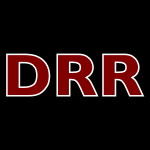 DRR-2003-TaghvaC #categorisation #question #rule-based
DRR-2003-TaghvaC #categorisation #question #rule-based- Do Thesauri enhance rule-based categorization for OCR text? (KT, JSC), pp. 111–119.
 HT-2003-MendesMC #adaptation #estimation #question #web
HT-2003-MendesMC #adaptation #estimation #question #web- Do adaptation rules improve web cost estimation? (EM, NM, SC), pp. 173–183.
 CSEET-2003-Cowling #question #what
CSEET-2003-Cowling #question #what- What Should Graduating Software Engineers Be Able To Do? (AJC), pp. 88–98.
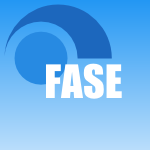 FASE-2003-ReichmannKM #approach #design #embedded #modelling #object-oriented
FASE-2003-ReichmannKM #approach #design #embedded #modelling #object-oriented- An Overall System Design Approach Doing Object-Oriented Modeling to Code-Generation for Embedded Electronic Systems (CR, MK, KDMG), pp. 52–66.
 CHI-2003-JackoSSBEEKMZ #feedback #multimodal #performance #question #visual notation #what
CHI-2003-JackoSSBEEKMZ #feedback #multimodal #performance #question #visual notation #what- Older adults and visual impairment: what do exposure times and accuracy tell us about performance gains associated with multimodal feedback? (JAJ, IUS, FS, LB, PJE, VKE, TK, KPM, BSZ), pp. 33–40.
 CHI-2003-RoddenW #how #people #question
CHI-2003-RoddenW #how #people #question- How do people manage their digital photographs? (KR, KRW), pp. 409–416.
 RE-2003-HickeyD #elicitation #how #question
RE-2003-HickeyD #elicitation #how #question- Elicitation Technique Selection: How Do Experts Do It? (AMH, AMD), p. 169–?.
 HT-2002-Laine #how #interactive #question
HT-2002-Laine #how #interactive #question- How do interactive texts reflect interactive functions? (PL), pp. 67–68.
 ITiCSE-2002-CarboneS #education #learning #question #student #what
ITiCSE-2002-CarboneS #education #learning #question #student #what- A studio-based teaching and learning model in IT: what do first year students think? (AC, JS), pp. 213–217.
 ITiCSE-2002-DagdilelisSE #behaviour #what
ITiCSE-2002-DagdilelisSE #behaviour #what- What they really do?: attempting (once again) to model novice programmers’ behavior (VD, MS, GE), p. 244.
 ITiCSE-2002-ParkinsonR #learning #performance #question
ITiCSE-2002-ParkinsonR #learning #performance #question- Do cognitive styles affect learning performance in different computer media? (AP, JAR), pp. 39–43.
 ITiCSE-2002-Ramakrishnan #education #named
ITiCSE-2002-Ramakrishnan #education #named- DoIT: dynamic curriculum organisation by innovation through technology (SR), p. 242.
 FME-2002-Bicarregui
FME-2002-Bicarregui- Do Not Read This (JB), pp. 106–125.
 ICGT-2002-Harel #behaviour #requirements #why
ICGT-2002-Harel #behaviour #requirements #why- Can Behavioral Requirements Be Executed? (And Why Would We Want to Do So?) (DH), pp. 6–7.
 CHI-2002-HudsonCKE #quote #research
CHI-2002-HudsonCKE #quote #research- “I’d be overwhelmed, but it’s just one more thing to do”: availability and interruption in research management (JMH, JC, WAK, TE), pp. 97–104.
 CHI-2002-KlemmerTPLL #design #web
CHI-2002-KlemmerTPLL #design #web- Where do web sites come from?: capturing and interacting with design history (SRK, MT, EPG, RL, JAL), pp. 1–8.
 CSCW-2002-HandelH #chat #question #what
CSCW-2002-HandelH #chat #question #what- What is chat doing in the workplace? (MH, JDH), pp. 1–10.
 CIKM-2002-Zemankova #information management #question #research
CIKM-2002-Zemankova #information management #question #research- Knowledge and information management: Is it possible to do interesting and important research, get funded, be useful and appreciated? (MZ), pp. 373–374.
 ICPR-v2-2002-Schiele #classification #how #question
ICPR-v2-2002-Schiele #classification #how #question- How Many Classifiers Do I Need? (BS), pp. 176–179.
 ICPR-v4-2002-SeppH #image #refinement
ICPR-v4-2002-SeppH #image #refinement- Featureless 6 DoF Pose Refinement from Stereo Images (WS, GH), pp. 17–20.
 SIGIR-2002-DziadoszC #question #web
SIGIR-2002-DziadoszC #question #web- Do thumbnail previews help users make better relevance decisions about web search results? (SD, RC), pp. 365–366.
 OOPSLA-2002-KawachiyaKO #java
OOPSLA-2002-KawachiyaKO #java- Lock reservation: Java locks can mostly do without atomic operations (KK, AK, TO), pp. 130–141.
 RE-2002-Kovitz #ambiguity #what
RE-2002-Kovitz #ambiguity #what- Ambiguity and What to Do about It (BK), p. 213.
 RE-2002-VickersMM #how #question #requirements
RE-2002-VickersMM #how #question #requirements- Requirements Engineering: How Do You Know How Good You Are? (AV, AM, HM), pp. 194–198.
 OSDI-2002-QiePP #programming #tool support #using
OSDI-2002-QiePP #programming #tool support #using- Defensive Programming: Using an Annotation Toolkit to Build DoS-Resistant Software (XQ, RP, LLP), pp. 45–60.
 CIKM-2001-Rosenthal #documentation #question #security #what
CIKM-2001-Rosenthal #documentation #question #security #what- What Can Researches Do to Improve Security of Data and Documents? (AR), p. 593.
 LSO-2001-Lehner #how
LSO-2001-Lehner #how- Keynote Address: How do Companies Learn? Selected Applications from the IT Sector (FL), p. 17.
 SIGIR-2001-TurpinH #why
SIGIR-2001-TurpinH #why- Why Batch and User Evaluations Do Not Give the Same Results (AT, WRH), pp. 225–231.
 PPDP-2001-SchulteS #bound #question
PPDP-2001-SchulteS #bound #question- When Do Bounds and Domain Propagation Lead to the Same Search Space? (CS, PJS), pp. 115–126.
 ICSE-2001-ShepardK #how
ICSE-2001-ShepardK #how- How to Do Inspections When There is No Time (TS, DK), pp. 718–719.
 ITiCSE-2000-Boyle
ITiCSE-2000-Boyle- Do it themselves (RB), p. 180.
 WCRE-J-1997-StoreyWM00 #comprehension #how #question #source code #tool support
WCRE-J-1997-StoreyWM00 #comprehension #how #question #source code #tool support- How do program understanding tools affect how programmers understand programs? (MADS, KW, HAM), pp. 183–207.
 ICSM-2000-Chapin00a #maintenance #question #what
ICSM-2000-Chapin00a #maintenance #question #what- Do We Know What Preventive Maintenance Is? (NC), pp. 15–17.
 ICSM-2000-Kajko-Mattsson #exclamation #maintenance #question #what
ICSM-2000-Kajko-Mattsson #exclamation #maintenance #question #what- Preventive Maintenance! Do We Know What It Is? (MKM), pp. 12–14.
 SIGIR-2000-HershTPCKSO #evaluation #question
SIGIR-2000-HershTPCKSO #evaluation #question- Do batch and user evaluation give the same results? (WRH, AT, SP, BC, DK, LS, DO), pp. 17–24.
 ICRE-2000-AntonA #certification #requirements #what
ICRE-2000-AntonA #certification #requirements #what- What Do You Mean I’ve Been Practicing without a License? Certification and Licensing of Requirements Engineering Professionals (AIA, JMA), p. 151.
 ICRE-2000-Mead00a #certification #requirements #what
ICRE-2000-Mead00a #certification #requirements #what- What Do You Mean I’m Practicing without a License? Certification and Licensing of Requirements Engineering Professionals (NRM), p. 152.
 CL-2000-Page #named
CL-2000-Page #named- ILP: Just Do It (DP), pp. 25–40.
 HT-1999-HardmanOMRB #composition #hypermedia
HT-1999-HardmanOMRB #composition #hypermedia- Do you have the Time? Composition and Linking in Time-Based Hypermedia (LH, JvO, KSM, LR, DCAB), pp. 189–196.
 VLDB-1999-DeRose #question #what #xml
VLDB-1999-DeRose #question #what #xml- What Do Those Weird XML Types Want, Anyway? (SJD), pp. 721–724.
 VLDB-1999-JagadishLS #question #what
VLDB-1999-JagadishLS #question #what- What can Hierarchies do for Data Warehouses? (HVJ, LVSL, DS), pp. 530–541.
 VLDB-1999-RothOH #cost analysis #data flow #matter #modelling
VLDB-1999-RothOH #cost analysis #data flow #matter #modelling- Cost Models DO Matter: Providing Cost Information for Diverse Data Sources in a Federated System (MTR, FÖ, LMH), pp. 599–610.
 ITiCSE-1999-Siegel #infinity #why
ITiCSE-1999-Siegel #infinity #why- Why do fools fall into infinite loops: singing to your computer science class (EVS), pp. 167–170.
 AGTIVE-1999-Levialdi #question #visual notation
AGTIVE-1999-Levialdi #question #visual notation- Visual Languages: Where Do We Stand? (SL), pp. 145–164.
 HCI-EI-1999-HansenS #question #what
HCI-EI-1999-HansenS #question #what- 200, 000, 000, 000 Call Records — Now What Do We Do? (RSH, RKS), pp. 1158–1161.
 ICEIS-1999-JarvisSMMC #adaptation #what #workflow
ICEIS-1999-JarvisSMMC #adaptation #what #workflow- What Right Do You Have To Do That?-Infusing Adaptive Workflow Technology with Knowledfe about the Organisational and Autority Context of a Task (PJ, JS, AM, JPM, PWHC), pp. 240–247.
 ACIR-1999-Rodden #how #people #question
ACIR-1999-Rodden #how #people #question- How Do People Organise Their Photographs? (KR).
 DAC-1998-IenneG #case study #design #experience #question #standard #tool support
DAC-1998-IenneG #case study #design #experience #question #standard #tool support- Practical Experiences with Standard-Cell Based Datapath Design Tools: Do We Really Need Regular Layouts? (PI, AG), pp. 396–401.
 SIGMOD-1998-Adelberg #automation #documentation #named
SIGMOD-1998-Adelberg #automation #documentation #named- NoDoSE — A Tool for Semi-Automatically Extracting Semi-Structured Data from Text Documents (BA), pp. 283–294.
 ITiCSE-1998-CurzonR #programming #question #student #why
ITiCSE-1998-CurzonR #programming #question #student #why- Why do students take programming modules? (PC, JR), pp. 59–63.
 ITiCSE-1998-Traxler #education #how
ITiCSE-1998-Traxler #education #how- How do computer science lecturers create modules? (poster) (JT), p. 308.
 ICSM-1998-Bennett #program transformation #question #reverse engineering
ICSM-1998-Bennett #program transformation #question #reverse engineering- Do Program Transformations Help Reverse Engineering? (KHB), p. 247–?.
 ICALP-1998-Wigderson #algorithm #probability #question
ICALP-1998-Wigderson #algorithm #probability #question- Do Probabilistic Algorithms Outperform Deterministic Ones? (AW), pp. 212–214.
 CHI-1998-AaltonenHR #how #question
CHI-1998-AaltonenHR #how #question- 101 Spots, or How Do Users Read Menus? (AA, AH, KJR), pp. 132–139.
 ICPR-1998-Gimelfarb #interactive #modelling #question #segmentation #what
ICPR-1998-Gimelfarb #interactive #modelling #question #segmentation #what- Supervised segmentation by pairwise interactions: do Gibbs models learn what we expect? (GLG), pp. 817–819.
 KR-1998-Levesque98a #what
KR-1998-Levesque98a #what- What Robots Can Do (HJL), p. 651.
 WCRE-1997-StoreyWM #comprehension #how #question #source code #tool support
WCRE-1997-StoreyWM #comprehension #how #question #source code #tool support- How Do Program Understanding Tools Affect How Programmers Understand Programs? (MADS, KW, HAM), p. 12–?.
 HCI-CC-1997-ShihG #design #guidelines #question
HCI-CC-1997-ShihG #design #guidelines #question- Do Existing Menu Design Guidelines Work in Chinese? (HMS, RSG), pp. 161–164.
 HCI-SEC-1997-Hakiel #how #question #re-engineering #usability
HCI-SEC-1997-Hakiel #how #question #re-engineering #usability- Usability Engineering and Software Engineering: How Do They Relate? (SH), pp. 521–524.
 HCI-SEC-1997-Moustakis #human-computer #machine learning #people #question
HCI-SEC-1997-Moustakis #human-computer #machine learning #people #question- Do People in HCI Use Machine Learning? (VM), pp. 95–98.
 HCI-SEC-1997-ShirabeB #3d #game studies #interface #question #realtime
HCI-SEC-1997-ShirabeB #3d #game studies #interface #question #realtime- Do Three Dimensional Realtime Interfaces Really Play Important Roles? (MS, YB), pp. 849–852.
 HCI-SEC-1997-Stary97a #interactive #modelling #question #specification
HCI-SEC-1997-Stary97a #interactive #modelling #question #specification- The Role of Interaction Modeling in Future Cognitive Ergonomics: Do Interaction Models Lead to Formal Specification of Involved Machine Intelligence? (CS), pp. 91–94.
 PLILP-1997-Thompson #approach #education #functional #problem #programming
PLILP-1997-Thompson #approach #education #functional #problem #programming- Where Do I Begin? A Problem Solving Approach in teaching Functional Programming (SJT), pp. 323–334.
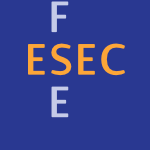 ESEC-FSE-1997-Maibaum #education #question #what
ESEC-FSE-1997-Maibaum #education #question #what- What We Teach Software Engineers in the University: Do We Take Engineering Seriously? (TSEM), pp. 40–50.
 ITiCSE-1996-ProulxRF #education #how #question #what
ITiCSE-1996-ProulxRF #education #how #question #what- Foundations of computer science: what are they and how do we teach them? (VKP, RR, HJF), pp. 42–48.
 CHI-1996-DouglasK #difference #modelling #question
CHI-1996-DouglasK #difference #modelling #question- Do Color Models Really Make a Difference? (SAD, TK), p. 399–?.
 CSCW-1996-Bazzigaluppi #question #what
CSCW-1996-Bazzigaluppi #question #what- Groupware at Work: It’s Here Now, But Do We Know What It Is Yet? (GB), pp. 438–440.
 KR-1996-Ginsberg96a #question
KR-1996-Ginsberg96a #question- Do Computers Need Common Sense? (MLG), pp. 620–626.
 ICRE-1996-Cheng #formal method #how #question #requirements
ICRE-1996-Cheng #formal method #how #question #requirements- Where and How do Formal Methods Fit in Requirements Engineering? (BHCC), pp. 154–156.
 PODS-1995-StoloboushkinT #effectiveness #finite #query #syntax
PODS-1995-StoloboushkinT #effectiveness #finite #query #syntax- Finite Queries do not Have Effective Syntax (APS, MAT), pp. 277–285.
 SIGMOD-1995-French #architecture #database
SIGMOD-1995-French #architecture #database- “One Size Fits All” Database Architectures Do Not Work for DDS (CDF), pp. 449–450.
 STOC-1995-DiaconisS #algorithm #question #what
STOC-1995-DiaconisS #algorithm #question #what- What do we know about the Metropolis algorithm? (PD, LSC), pp. 112–129.
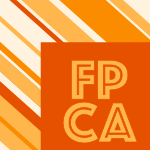 FPCA-1995-SchauserG #how #question #source code #strict
FPCA-1995-SchauserG #how #question #source code #strict- How Much Non-Strictness do Lenient Programs Require? (KES, SCG), pp. 216–225.
 CHI-1995-OlsonOM #design #question #realtime #video #what
CHI-1995-OlsonOM #design #question #realtime #video #what- What Mix of Video and Audio is Useful for Small Groups Doing Remote Real-Time Design Work? (JSO, GMO, DKM), pp. 362–368.
 CHI-1995-RoeslerM #data access #online #taxonomy #what
CHI-1995-RoeslerM #data access #online #taxonomy #what- What Help Do Users Need?: Taxonomies for On-Line Information Needs and Access Methods (AWR, SGM), pp. 437–441.
 ECOOP-1995-HolzleU #hardware #object-oriented #question
ECOOP-1995-HolzleU #hardware #object-oriented #question- Do Object-Oriented Languages Need Special Hardware Support? (UH, DU), pp. 283–302.
 LICS-1995-Seth #complexity #fixpoint #logic #question
LICS-1995-Seth #complexity #fixpoint #logic #question- When Do Fixed Point Logics Capture Complexity Classes? (AS), pp. 353–363.
 CSEE-1994-MooreP #experience #learning #re-engineering
CSEE-1994-MooreP #experience #learning #re-engineering- Learning by Doing: Goals & Experience of Two Software Engineering Project Courses (MMM, CP), pp. 151–164.
 TRI-Ada-1994-GreeneL #cpu #embedded #migration
TRI-Ada-1994-GreeneL #cpu #embedded #migration- Embedded CPU Target Migration, Doing More With Less (RG, GL), pp. 429–436.
 ICDAR-1993-CollinTV #analysis #documentation
ICDAR-1993-CollinTV #analysis #documentation- Don’t tell mom I’m doing document analysis; she believes I’m in the computer vision field (SC, KT, PV), pp. 619–622.
 CSM-1993-ArnoldSW #design #question
CSM-1993-ArnoldSW #design #question- Do Design Records Really Benefit Software Malntenance? (RSA, MS, NW), pp. 234–243.
 WCRE-1993-AikenMR #framework #information management #legacy #reverse engineering
WCRE-1993-AikenMR #framework #information management #legacy #reverse engineering- A Framework for Reverse Engineering DoD Legacy Information Systems (PHA, AHM, RR), pp. 180–191.
 STOC-1993-JiangL #string
STOC-1993-JiangL #string- k one-way heads cannot do string-matching (TJ, ML), pp. 62–70.
 STOC-1993-Jones #constant #matter
STOC-1993-Jones #constant #matter- Constant time factors do matter (NDJ), pp. 602–611.
 HCI-ACS-1993-Abrahamsson #matter #question
HCI-ACS-1993-Abrahamsson #matter #question- Management Professionalization: Do Computers Matter? (BA), pp. 961–965.
 HCI-ACS-1993-KarlssonK #problem
HCI-ACS-1993-KarlssonK #problem- Do Computers Solve the Problem? Telephone vs. Telefax vs. Computers in Home Shopping Systems in Scandinavia (MAK, MK), pp. 427–432.
 HCI-SHI-1993-Kakola #comprehension #coordination #embedded
HCI-SHI-1993-Kakola #comprehension #coordination #embedded- Doing by Understanding: Embedded Systems for Understanding Coordinated Work (TK), pp. 973–978.
 INTERCHI-1993-StaskoBL #algorithm #analysis #animation #empirical #learning
INTERCHI-1993-StaskoBL #algorithm #analysis #animation #empirical #learning- Do algorithm animations assist learning?: an empirical study and analysis (JTS, ANB, CL), pp. 61–66.
 KBSE-1992-SolderitschY #knowledge base #reuse #tool support #tutorial
KBSE-1992-SolderitschY #knowledge base #reuse #tool support #tutorial- Knowledge Based Software Reuse Methods and Tools: DoD STARS RLF Technology (Tutorial) (JS, DY), p. 1.
 SIGMOD-1992-Rosenthal #what
SIGMOD-1992-Rosenthal #what- What Can We Do to Strengthen the Connection Between Theory and System Builders (AR), p. 101.
 STOC-1992-Beigel
STOC-1992-Beigel- When Do Extra Majority Gates Help? Polylog(n) Majority Gates Are Equivalent to One (RB), pp. 450–454.
 CAV-1992-Lamport #verification
CAV-1992-Lamport #verification- Computer-Hindered Verification (Humans Can Do It Too) (LL), p. 1.
 HT-1991-ThuringHH #how #what
HT-1991-ThuringHH #how #what- What’s Eliza Doing in the Chinese Room? Incoherent Hyperdocuments — and How to Avoid Them (MT, JMH, JH), pp. 161–177.
 VDME-1991-1-BednarczykB #recursion
VDME-1991-1-BednarczykB #recursion- CPO’s do not form a CPO, and yet Recursion Works (MAB, AMB), pp. 268–278.
 TOOLS-USA-1991-Meyer #how #question
TOOLS-USA-1991-Meyer #how #question- Do we know how to find the classes? (BM), pp. 349–350.
 PPoPP-1991-AncourtI
PPoPP-1991-AncourtI- Scanning Polyhedra with DO Loops (CA, FI), pp. 39–50.
 HT-1989-Lesk #what
HT-1989-Lesk #what- What To Do When There’s Too Much Information (ML), pp. 305–318.
 CHI-1989-MackayMCRRC #how #lens #question
CHI-1989-MackayMCRRC #how #lens #question- How do experienced information lens users use rules? (WEM, TWM, KC, RR, DR, SKC), pp. 211–216.
 ML-1989-VanLehn #problem #what
ML-1989-VanLehn #problem #what- Discovering Problem Solving Strategies: What Humans Do and Machines Don’t (Yet) (KV), pp. 215–217.
 ICALP-1988-KirschenhoferPS
ICALP-1988-KirschenhoferPS- Do We Really Need to Balance Patricia Trees? (Extended Abstract) (PK, HP, WS), pp. 302–316.
 SIGIR-1988-Case #comprehension #how #retrieval #scalability
SIGIR-1988-Case #comprehension #how #retrieval #scalability- How Do the Experts Do It? The Use of Ethnographic Methods as an Aid to Understanding the Cognitive Processing and Retrieval of Large Bodies of Text (DOC), pp. 127–133.
 POPL-1988-WilliamsW #question
POPL-1988-WilliamsW #question- Sacrificing Simplicity for Convenience: Where Do You Draw the Line? (JHW, ELW), pp. 169–179.
 SLP-1987-Drabent87 #logic programming #question #source code
SLP-1987-Drabent87 #logic programming #question #source code- Do Logic Programs Resemble Programs in Conventional Languages? (WD), pp. 289–396.
 CADE-1986-DickC #automation #empirical #equation #reasoning #using
CADE-1986-DickC #automation #empirical #equation #reasoning #using- Using Narrowing to do Isolation in Symbolic Equation Solving — An Experiment in Automated Reasoning (AJJD, JC), pp. 272–280.
 ICALP-1985-Johnson #equivalence #question
ICALP-1985-Johnson #equivalence #question- Do Rational Equivalence Relations have Regular Cross-Sections? (JHJ), pp. 300–309.
 SLP-1985-Narain85 #evaluation #lazy evaluation #logic
SLP-1985-Narain85 #evaluation #lazy evaluation #logic- A Technique for Doing Lazy Evaluation in Logic (SN), pp. 261–269.
 DAC-1981-Burdick #design #formal method #process #what
DAC-1981-Burdick #design #formal method #process #what- What to do when the seat of your pants wears out — the formalization of the VLSI design process (EB), pp. 708–709.
 SOSP-1981-BabaogluJ #architecture
SOSP-1981-BabaogluJ #architecture- Converting a Swap-Based System to do Paging in an Architecture Lacking Page-Reference Bits (ÖB, WNJ), pp. 78–86.
 VLDB-1980-BernsteinG #normalisation #question #what
VLDB-1980-BernsteinG #normalisation #question #what- What does Boyce-Codd Normal Form Do? (PAB, NG), pp. 245–259.
 SIGIR-1980-Montgomery #question
SIGIR-1980-Montgomery #question- Where Do We Go From Here? (CAM), pp. 370–385.
 CADE-1980-AielloW #algebra #reasoning #using
CADE-1980-AielloW #algebra #reasoning #using- Using Meta-Theoretic Reasoning to do Algebra (LCA, RWW), pp. 1–13.
 VLDB-1978-Johnson #question #what
VLDB-1978-Johnson #question #what- What End-User Facilities do we Need? (FEJ), p. 126.
 ICALP-1978-PriceW #stack
ICALP-1978-PriceW #stack- States Can Sometimes Do More Than Stack Symbols in PDA’s (JKP, DW), pp. 353–362.
 ICSE-1978-Fisher #design #higher-order #interactive #requirements
ICSE-1978-Fisher #design #higher-order #interactive #requirements- The Interaction Between the Preliminary Designs and the Technical Requirements for the DoD Common High Order Language (DAF), pp. 82–83.
 SIGMOD-2015-CSKZYRPAKDRD #big data #industrial #what #why
SIGMOD-2015-CSKZYRPAKDRD #big data #industrial #what #why ICSME-2015-HoraRAEDV #api #developer #ecosystem #evolution #how #smalltalk
ICSME-2015-HoraRAEDV #api #developer #ecosystem #evolution #how #smalltalk ICSME-2015-KononenkoBGCG #bibliography #code review #matter #people #quality #question
ICSME-2015-KononenkoBGCG #bibliography #code review #matter #people #quality #question ICSME-2015-SzokeNHFG #automation #case study #industrial #maintenance #refactoring
ICSME-2015-SzokeNHFG #automation #case study #industrial #maintenance #refactoring MSR-2015-CamiloMN #case study #debugging
MSR-2015-CamiloMN #case study #debugging MSR-2015-LabuschagneH #question #source code
MSR-2015-LabuschagneH #question #source code MSR-2015-ZouXGYYZ #analysis #developer #empirical #non-functional #requirements #stack overflow #topic #using
MSR-2015-ZouXGYYZ #analysis #developer #empirical #non-functional #requirements #stack overflow #topic #using SANER-2015-MoralesMK #bibliography #case study #code review #design #quality
SANER-2015-MoralesMK #bibliography #case study #code review #design #quality SCAM-2015-SteidlD #how #java #question
SCAM-2015-SteidlD #how #java #question CHI-2015-DenisovaC #game studies #question
CHI-2015-DenisovaC #game studies #question CHI-2015-FrenchSBH #ambiguity #how #lens
CHI-2015-FrenchSBH #ambiguity #how #lens CHI-2015-HangLH #authentication #exclamation #security #smarttech #what
CHI-2015-HangLH #authentication #exclamation #security #smarttech #what CSCW-2015-GelleyJ
CSCW-2015-GelleyJ CSCW-2015-GuhaW #network #social
CSCW-2015-GuhaW #network #social CSCW-2015-TrainerCKH #community #question #what
CSCW-2015-TrainerCKH #community #question #what CSCW-2015-WieseMHZ #quote
CSCW-2015-WieseMHZ #quote DUXU-IXD-2015-Moldenhauer #design #how #student
DUXU-IXD-2015-Moldenhauer #design #how #student HCI-IT-2015-RughinisT #game studies #gender #quote #sketching
HCI-IT-2015-RughinisT #game studies #gender #quote #sketching HCI-UC-2015-ClarkeBK #experience #question #using #what
HCI-UC-2015-ClarkeBK #experience #question #using #what HIMI-IKD-2015-WinterSTMCSVS #learning #question #student
HIMI-IKD-2015-WinterSTMCSVS #learning #question #student LCT-2015-ValdezBGSZ #complexity #visualisation #what
LCT-2015-ValdezBGSZ #complexity #visualisation #what SCSM-2015-BeldadK #facebook #risk management
SCSM-2015-BeldadK #facebook #risk management ECIR-2015-UrbanoM #correlation #definite clause grammar #how #question #user satisfaction
ECIR-2015-UrbanoM #correlation #definite clause grammar #how #question #user satisfaction SEKE-2015-ValentimCEP #how #usability
SEKE-2015-ValentimCEP #how #usability SEKE-2015-WuCZX #c++ #developer #empirical #how #library
SEKE-2015-WuCZX #c++ #developer #empirical #how #library POPL-2015-VafeiadisBCMN #compilation #memory management #optimisation #what
POPL-2015-VafeiadisBCMN #compilation #memory management #optimisation #what ESEC-FSE-2015-BellerGPZ #developer #how #ide #why
ESEC-FSE-2015-BellerGPZ #developer #how #ide #why ICSE-v1-2015-YskoutSJ #design #question #security
ICSE-v1-2015-YskoutSJ #design #question #security ICSE-v2-2015-BellerGZ #developer #how #question
ICSE-v2-2015-BellerGZ #developer #how #question ICSE-v2-2015-CzerwonkaGT #bibliography #code review #debugging #how
ICSE-v2-2015-CzerwonkaGT #bibliography #code review #debugging #how PLEASE-2015-ChitchyanNG #product line #re-engineering #what
PLEASE-2015-ChitchyanNG #product line #re-engineering #what SPLC-2015-GreggSC #product line
SPLC-2015-GreggSC #product line ECSA-2014-CaraccioloLN #architecture #how #quality #question #requirements #validation
ECSA-2014-CaraccioloLN #architecture #how #quality #question #requirements #validation ASE-2014-KochharTL #bias #debugging #locality #matter #question
ASE-2014-KochharTL #bias #debugging #locality #matter #question ITiCSE-2014-EdwardsS #question #student #testing
ITiCSE-2014-EdwardsS #question #student #testing ICPC-2014-ShahinLL #architecture #comprehension #design
ICPC-2014-ShahinLL #architecture #comprehension #design ICPC-2014-VasquezBPOP #android #api #case study #how #stack overflow
ICPC-2014-VasquezBPOP #android #api #case study #how #stack overflow ICSME-2014-EderFHJ #question
ICSME-2014-EderFHJ #question ICSME-2014-KerzaziKA #automation #empirical #why
ICSME-2014-KerzaziKA #automation #empirical #why ICSME-2014-PalombaBPOL #case study #developer #smell
ICSME-2014-PalombaBPOL #case study #developer #smell MSR-2014-BellerBZJ #code review #open source #problem #question
MSR-2014-BellerBZJ #code review #open source #problem #question MSR-2014-BrunetMTFG #design #developer #question
MSR-2014-BrunetMTFG #design #developer #question MSR-2014-MurgiaTAO #analysis #developer
MSR-2014-MurgiaTAO #analysis #developer ICALP-v1-2014-IaconoO #why
ICALP-v1-2014-IaconoO #why CHI-2014-CostanzaFCRRJ #energy
CHI-2014-CostanzaFCRRJ #energy CHI-2014-KobsaKL #behaviour #personalisation #privacy
CHI-2014-KobsaKL #behaviour #personalisation #privacy CHI-2014-MasseyTTW #file system #question #what
CHI-2014-MasseyTTW #file system #question #what CHI-2014-MellisB
CHI-2014-MellisB CHI-2014-NguyenDCWD #game studies
CHI-2014-NguyenDCWD #game studies CHI-2014-SchulerGMRJ #comprehension #coordination #social
CHI-2014-SchulerGMRJ #comprehension #coordination #social CHI-2014-SinghKJFTKBW #design #people #physics #process
CHI-2014-SinghKJFTKBW #design #people #physics #process CHI-2014-Wein #question #recognition #visual notation
CHI-2014-Wein #question #recognition #visual notation CSCW-2014-ForteDMA #network #online #social #student #what
CSCW-2014-ForteDMA #network #online #social #student #what CSCW-2014-ZhuDKK #assessment #learning #performance
CSCW-2014-ZhuDKK #assessment #learning #performance DUXU-ELAS-2014-DysonJ #interface #question #what
DUXU-ELAS-2014-DysonJ #interface #question #what DUXU-ELAS-2014-MontAlvao #bibliography #health #using
DUXU-ELAS-2014-MontAlvao #bibliography #health #using DUXU-ELAS-2014-SchmeilS #health #how #quote
DUXU-ELAS-2014-SchmeilS #health #how #quote DUXU-ELAS-2014-Spinillo #how #usability
DUXU-ELAS-2014-Spinillo #how #usability HCI-AS-2014-ZiesemerBMOS #case study #difference #gender #matter
HCI-AS-2014-ZiesemerBMOS #case study #difference #gender #matter LCT-TRE-2014-LorenzK #exclamation #online
LCT-TRE-2014-LorenzK #exclamation #online SCSM-2014-MendesFFC #analysis #classification #how #social #using
SCSM-2014-MendesFFC #analysis #classification #how #social #using CAiSE-2014-EpureHDB #flexibility #mining #process #what
CAiSE-2014-EpureHDB #flexibility #mining #process #what ICEIS-v3-2014-ObsivacBB #performance #privacy #student
ICEIS-v3-2014-ObsivacBB #performance #privacy #student CIKM-2014-GrbovicHKM #category theory #email #how
CIKM-2014-GrbovicHKM #category theory #email #how CIKM-2014-HassanFVDL0
CIKM-2014-HassanFVDL0 KEOD-2014-Aalst #mining #people #process #what
KEOD-2014-Aalst #mining #people #process #what RecSys-2014-LiuWW #what
RecSys-2014-LiuWW #what SEKE-2014-HuangCWC #how #interactive #question #testing
SEKE-2014-HuangCWC #how #interactive #question #testing SIGIR-2014-ZhangZ0LM #bibliography #classification #sentiment
SIGIR-2014-ZhangZ0LM #bibliography #classification #sentiment RE-2014-GuzmanM #analysis #fine-grained #how #sentiment
RE-2014-GuzmanM #analysis #fine-grained #how #sentiment SAC-2014-ShoshitaishviliIDV #analysis #scalability #security #trade-off
SAC-2014-ShoshitaishviliIDV #analysis #scalability #security #trade-off ICSE-2014-BrindescuCSD #distributed #how #question #version control
ICSE-2014-BrindescuCSD #distributed #how #question #version control ICSE-2014-EndrikatHRS #api #documentation #how #question #static typing #type system #usability
ICSE-2014-EndrikatHRS #api #documentation #how #question #static typing #type system #usability ICSE-2014-KhadkaBSJH #how #legacy #question
ICSE-2014-KhadkaBSJH #how #legacy #question ICST-2014-Feldt #question #testing
ICST-2014-Feldt #question #testing SMT-2014-Barrett #named #question #smt
SMT-2014-Barrett #named #question #smt DAC-2013-FariborziCNCHLLS
DAC-2013-FariborziCNCHLLS DATE-2013-KazmierskiWAM #energy #optimisation #performance
DATE-2013-KazmierskiWAM #energy #optimisation #performance DocEng-2013-FerilliER #documentation #html #multi
DocEng-2013-FerilliER #documentation #html #multi ITiCSE-2013-Buck #approach #reliability
ITiCSE-2013-Buck #approach #reliability CSMR-2013-AnicheOG #case study #industrial #open source #quality #testing #what
CSMR-2013-AnicheOG #case study #industrial #open source #quality #testing #what ICSM-2013-LeTL #fault #locality #theory and practice
ICSM-2013-LeTL #fault #locality #theory and practice MSR-2013-NadiDTHL #how #linux #question #variability #what
MSR-2013-NadiDTHL #how #linux #question #variability #what MSR-2013-SouzaM #category theory #metric #question
MSR-2013-SouzaM #category theory #metric #question WCRE-2013-LiXPZ #developer #how #question #what
WCRE-2013-LiXPZ #developer #how #question #what WCRE-2013-YamashitaM #bibliography #developer #smell
WCRE-2013-YamashitaM #bibliography #developer #smell PEPM-2013-MartinezVP #compilation #exclamation #haskell #performance
PEPM-2013-MartinezVP #compilation #exclamation #haskell #performance CHI-2013-AnnettB #exclamation #gesture #symmetry
CHI-2013-AnnettB #exclamation #gesture #symmetry CHI-2013-KangBK #design #internet #people #policy #why
CHI-2013-KangBK #design #internet #people #policy #why CHI-2013-KhovanskayaBCVG #approach #design #quote #what
CHI-2013-KhovanskayaBCVG #approach #design #quote #what CHI-2013-MarcuTCGRSDK #comprehension #education #why
CHI-2013-MarcuTCGRSDK #comprehension #education #why CHI-2013-YangPCLNC #design #developer #development #exclamation #tool support
CHI-2013-YangPCLNC #design #developer #development #exclamation #tool support CSCW-2013-HemphillOS #question #twitter #what
CSCW-2013-HemphillOS #question #twitter #what DHM-SET-2013-SaparovaBLKMY #health #how #information management #problem #question #usability #what
DHM-SET-2013-SaparovaBLKMY #health #how #information management #problem #question #usability #what HCI-UC-2013-KohPC #people #question
HCI-UC-2013-KohPC #people #question ICEIS-J-2013-KahkonenMS #enterprise #integration #question #what
ICEIS-J-2013-KahkonenMS #enterprise #integration #question #what CIKM-2013-ChengAH #how #question
CIKM-2013-ChengAH #how #question KDIR-KMIS-2013-GirdauskieneS #what
KDIR-KMIS-2013-GirdauskieneS #what MLDM-2013-YasojimaFBOS #analysis #case study #generative #power management
MLDM-2013-YasojimaFBOS #analysis #case study #generative #power management SEKE-2013-BassoWPO #how #question #reuse #tool support
SEKE-2013-BassoWPO #how #question #reuse #tool support SIGIR-2013-JiangJH #fault #how #query
SIGIR-2013-JiangJH #fault #how #query ECOOP-2013-TasharofiDJ #concurrent #developer #modelling #question #scala #why
ECOOP-2013-TasharofiDJ #concurrent #developer #modelling #question #scala #why ECOOP-2013-TemperoYN #inheritance #java #what
ECOOP-2013-TemperoYN #inheritance #java #what OOPSLA-2013-HoppeH #comparison #developer #empirical #java
OOPSLA-2013-HoppeH #comparison #developer #empirical #java REFSQ-2013-DanevaBH #architecture #case study #experience #quality #question #requirements #what
REFSQ-2013-DanevaBH #architecture #case study #experience #quality #question #requirements #what SAC-2013-OliveiraBMNBGB #multi #network
SAC-2013-OliveiraBMNBGB #multi #network ESEC-FSE-2013-BlincoeVD #coordination #dependence #identification
ESEC-FSE-2013-BlincoeVD #coordination #dependence #identification SOSP-2013-XuZHZSYZP
SOSP-2013-XuZHZSYZP DAC-2012-PalemA #exclamation #what
DAC-2012-PalemA #exclamation #what HT-2012-Staab #how
HT-2012-Staab #how SIGMOD-2012-ZukowskiB #challenge #research
SIGMOD-2012-ZukowskiB #challenge #research CSEET-2012-BareissS
CSEET-2012-BareissS ITiCSE-2012-FidotenS #bibliography #what
ITiCSE-2012-FidotenS #bibliography #what CSMR-2012-BernardiCLPD #communication #debugging #developer #eclipse
CSMR-2012-BernardiCLPD #communication #debugging #developer #eclipse ICPC-2012-KleinschmagerHRS #empirical #maintenance #static typing #type system
ICPC-2012-KleinschmagerHRS #empirical #maintenance #static typing #type system ICSM-2012-HigoK #consistency #detection #how #nondeterminism
ICSM-2012-HigoK #consistency #detection #how #nondeterminism ICSM-2012-HindleBZN #analysis #developer #implementation #question #requirements #topic
ICSM-2012-HindleBZN #analysis #developer #implementation #question #requirements #topic ICSM-2012-KuangMHGHJE #comprehension #dependence #question #requirements #source code #traceability
ICSM-2012-KuangMHGHJE #comprehension #dependence #question #requirements #source code #traceability ICSM-2012-YamashitaM #aspect-oriented #maintenance #question #smell
ICSM-2012-YamashitaM #aspect-oriented #maintenance #question #smell MSR-2012-ArthoSCTZ #question #why
MSR-2012-ArthoSCTZ #question #why MSR-2012-GuanaRHS #analysis #android #architecture #multi
MSR-2012-GuanaRHS #analysis #android #architecture #multi MSR-2012-KhomhDZA #case study #empirical #performance #quality
MSR-2012-KhomhDZA #case study #empirical #performance #quality WCRE-2012-CleveH #question #what
WCRE-2012-CleveH #question #what DLT-2012-KutribMW #automaton #finite #multi
DLT-2012-KutribMW #automaton #finite #multi FM-2012-Wassyng #question #what
FM-2012-Wassyng #question #what ICFP-2012-PikeWNG #case study #compilation #experience
ICFP-2012-PikeWNG #case study #compilation #experience CHI-2012-BergmanWSNR #how #navigation
CHI-2012-BergmanWSNR #how #navigation CHI-2012-BirnholtzBF #behaviour
CHI-2012-BirnholtzBF #behaviour CHI-2012-CoxCSC #challenge #experience #game studies
CHI-2012-CoxCSC #challenge #experience #game studies CHI-2012-FitchettC #named #predict #what
CHI-2012-FitchettC #named #predict #what CHI-2012-MatthewsJW #design #experience #how #question #user interface
CHI-2012-MatthewsJW #design #experience #how #question #user interface CHI-2012-ParkBN #how #question
CHI-2012-ParkBN #how #question CHI-2012-PetrieP #comparison #interactive #problem #usability #what
CHI-2012-PetrieP #comparison #interactive #problem #usability #what CSCW-2012-KeeganGC #analysis #collaboration #editing #multi #network #statistics #wiki
CSCW-2012-KeeganGC #analysis #collaboration #editing #multi #network #statistics #wiki CSCW-2012-Nagar #community #online #process #what
CSCW-2012-Nagar #community #online #process #what CSCW-2012-WycheG #case study #communication #how #product line #quote
CSCW-2012-WycheG #case study #communication #how #product line #quote CSCW-2012-XuB #case study #community #interactive #online #scalability #what
CSCW-2012-XuB #case study #community #interactive #online #scalability #what CIKM-2012-MurakamiM #how #people #question #web
CIKM-2012-MurakamiM #how #people #question #web CIKM-2012-XinKALH #design #modelling
CIKM-2012-XinKALH #design #modelling CIKM-2012-YueJHH #analysis #collaboration #query #web
CIKM-2012-YueJHH #analysis #collaboration #query #web ICPR-2012-DaveDG #question
ICPR-2012-DaveDG #question ICPR-2012-KumagaiOTYMK #modelling #robust
ICPR-2012-KumagaiOTYMK #modelling #robust KR-2012-BaralD #automation #how #learning #programming #set
KR-2012-BaralD #automation #how #learning #programming #set MoDELS-2012-GravinoRST #comprehension #design pattern #developer #documentation #replication #source code
MoDELS-2012-GravinoRST #comprehension #design pattern #developer #documentation #replication #source code MoDELS-2012-GravinoRST #comprehension #design pattern #developer #documentation #replication #source code
MoDELS-2012-GravinoRST #comprehension #design pattern #developer #documentation #replication #source code ECOOP-2012-RobbesRT #evolution #question
ECOOP-2012-RobbesRT #evolution #question RE-2012-AmellerACF #architecture #case study #how #non-functional #requirements
RE-2012-AmellerACF #architecture #case study #how #non-functional #requirements RE-2012-MaglyasNS #question #what
RE-2012-MaglyasNS #question #what FSE-2012-OkurD #developer #how #library #parallel #question
FSE-2012-OkurD #developer #how #library #parallel #question FSE-2012-RobbesLR #api #developer #ecosystem #how #smalltalk
FSE-2012-RobbesLR #api #developer #ecosystem #how #smalltalk FSE-2012-TaoDXZK #case study #how #industrial
FSE-2012-TaoDXZK #case study #how #industrial FSE-2012-WalkerRS #composition #problem #question
FSE-2012-WalkerRS #composition #problem #question ICSE-2012-Braithwaite #how #industrial #programming #what
ICSE-2012-Braithwaite #how #industrial #programming #what ICSE-2012-RoehmTKM #developer #how #question
ICSE-2012-RoehmTKM #developer #how #question ICST-2012-JustKS #analysis #effectiveness #mutation testing #performance #question
ICST-2012-JustKS #analysis #effectiveness #mutation testing #performance #question ISSTA-2012-JensenJM
ISSTA-2012-JensenJM ASE-2011-MaderE #empirical #navigation #source code #traceability
ASE-2011-MaderE #empirical #navigation #source code #traceability DAC-2011-Mador-HaimAM #consistency #how #memory management #modelling #question #testing
DAC-2011-Mador-HaimAM #consistency #how #memory management #modelling #question #testing SIGMOD-2011-TeubnerM #how
SIGMOD-2011-TeubnerM #how VLDB-2011-BenouaretBHB #composition #fuzzy #named #query #web #web service
VLDB-2011-BenouaretBHB #composition #fuzzy #named #query #web #web service ITiCSE-2011-ChanK
ITiCSE-2011-ChanK ITiCSE-2011-Hu #what
ITiCSE-2011-Hu #what FoSSaCS-2011-AxelsenG #question #source code #what
FoSSaCS-2011-AxelsenG #question #source code #what ICSM-2011-Kemmerer #how #what
ICSM-2011-Kemmerer #how #what MSR-2011-BernardiSZDP #question #topic #what
MSR-2011-BernardiSZDP #question #topic #what MSR-2011-BhattacharyaN #debugging #modelling #predict #question
MSR-2011-BhattacharyaN #debugging #modelling #predict #question MSR-2011-EyolfsonTL #commit #debugging #developer #experience
MSR-2011-EyolfsonTL #commit #debugging #developer #experience MSR-2011-HirataM
MSR-2011-HirataM MSR-2011-PaganoM #case study #developer #how
MSR-2011-PaganoM #case study #developer #how WCRE-2011-PosnettHD #fault #question
WCRE-2011-PosnettHD #fault #question PLDI-2011-RamanKOLA #distributed #parallel #using
PLDI-2011-RamanKOLA #distributed #parallel #using STOC-2011-GolabHW #distributed #implementation #random
STOC-2011-GolabHW #distributed #implementation #random ICFP-2011-GibbonsH #equation #monad #reasoning
ICFP-2011-GibbonsH #equation #monad #reasoning CHI-2011-DabbishMG #self #why
CHI-2011-DabbishMG #self #why CHI-2011-DasFS #design #interactive #question
CHI-2011-DasFS #design #interactive #question CHI-2011-LaquaSGG #case study #information management
CHI-2011-LaquaSGG #case study #information management CHI-2011-SchwindBH #recommendation
CHI-2011-SchwindBH #recommendation CHI-2011-YeeDYN
CHI-2011-YeeDYN CSCW-2011-GuyURPJ #enterprise #recommendation
CSCW-2011-GuyURPJ #enterprise #recommendation DUXU-v1-2011-TurnerC #interface #question
DUXU-v1-2011-TurnerC #interface #question HCI-DDA-2011-KallinenER #difference #multi
HCI-DDA-2011-KallinenER #difference #multi HCI-DDA-2011-ZimmermanKPBLJ #how #performance #quote
HCI-DDA-2011-ZimmermanKPBLJ #how #performance #quote HCI-ITE-2011-UllahLORM #case study #collaboration #distributed #interactive #what
HCI-ITE-2011-UllahLORM #case study #collaboration #distributed #interactive #what HCI-UA-2011-Furukawa #design #injection #question #what
HCI-UA-2011-Furukawa #design #injection #question #what HIMI-v1-2011-TakeuchiN #how #question
HIMI-v1-2011-TakeuchiN #how #question IDGD-2011-KreifeldtLC #design
IDGD-2011-KreifeldtLC #design AdaEurope-2011-ChapmanJ
AdaEurope-2011-ChapmanJ AdaEurope-2011-Daniels #object-oriented
AdaEurope-2011-Daniels #object-oriented SIGAda-2011-Brosgol #named #safety #standard
SIGAda-2011-Brosgol #named #safety #standard CIKM-2011-FuLZZ #learning #query
CIKM-2011-FuLZZ #learning #query CIKM-2011-PobleteGMJ #twitter
CIKM-2011-PobleteGMJ #twitter KDD-2011-McCue #security
KDD-2011-McCue #security SIGIR-2011-ClinchantG #constraints #information retrieval #modelling
SIGIR-2011-ClinchantG #constraints #information retrieval #modelling ECOOP-2011-RichardsHBV #javascript #scalability
ECOOP-2011-RichardsHBV #javascript #scalability OOPSLA-2011-SonMS #named #security #what
OOPSLA-2011-SonMS #named #security #what PLATEAU-2011-GilGM #how #metric #question
PLATEAU-2011-GilGM #how #metric #question RE-2011-Waldmann #agile #constraints #development #requirements #what
RE-2011-Waldmann #agile #constraints #development #requirements #what ESEC-FSE-2011-YinYZPB #debugging #how #question
ESEC-FSE-2011-YinYZPB #debugging #how #question ICSE-2011-TreudeBS #how #question #web
ICSE-2011-TreudeBS #how #question #web SOSP-2011-ColpNZACDLW #security
SOSP-2011-ColpNZACDLW #security SIGMOD-2010-ZhouCC #named #prototype #query #type system
SIGMOD-2010-ZhouCC #named #prototype #query #type system ITiCSE-2010-GurselG #student #what
ITiCSE-2010-GurselG #student #what ITiCSE-2010-MainFH #quantum #student #what
ITiCSE-2010-MainFH #quantum #student #what MSR-2010-SchroterBP #debugging #developer #question #stack
MSR-2010-SchroterBP #debugging #developer #question #stack SAS-2010-Lesens #question #static analysis #using #why
SAS-2010-Lesens #question #static analysis #using #why CHI-2010-DearmanT #exclamation #why
CHI-2010-DearmanT #exclamation #why CHI-2010-HartmannMBK #error message #fault #what
CHI-2010-HartmannMBK #error message #fault #what CHI-2010-MorrisTP #behaviour #bibliography #network #people #social #what #why
CHI-2010-MorrisTP #behaviour #bibliography #network #people #social #what #why CHI-2010-Thom-SantelliCG #collaboration #what
CHI-2010-Thom-SantelliCG #collaboration #what CSCW-2010-LeeKF #how #people #question
CSCW-2010-LeeKF #how #people #question ICEIS-HCI-2010-PereiraBS #question #social #why
ICEIS-HCI-2010-PereiraBS #question #social #why ICML-2010-PoonZCW #clustering #modelling
ICML-2010-PoonZCW #clustering #modelling RecSys-2010-ZhengWZLY #case study #empirical #recommendation
RecSys-2010-ZhengWZLY #case study #empirical #recommendation SEKE-2010-AlhassanCB #analysis #fault #network #people #social
SEKE-2010-AlhassanCB #analysis #fault #network #people #social SIGIR-2010-SandersonPCK #evaluation #metric #question
SIGIR-2010-SandersonPCK #evaluation #metric #question OOPSLA-2010-ShiPYLZCZ #concurrent #debugging #detection #invariant
OOPSLA-2010-ShiPYLZCZ #concurrent #debugging #detection #invariant RE-2010-Beatty #question #what
RE-2010-Beatty #question #what RE-2010-RachevaDSHW #agile #case study #requirements
RE-2010-RachevaDSHW #agile #case study #requirements REFSQ-2010-AmellerF #architecture #bibliography #how #non-functional #requirements
REFSQ-2010-AmellerF #architecture #bibliography #how #non-functional #requirements RTA-2010-NeurauterM #integer #polynomial
RTA-2010-NeurauterM #integer #polynomial DAC-2009-VenerisS
DAC-2009-VenerisS DAC-2009-YingKKGGOTW #how #question
DAC-2009-YingKKGGOTW #how #question ITiCSE-2009-MitchellPH #question #what
ITiCSE-2009-MitchellPH #question #what ITiCSE-2009-WiesnerB #concept #how #learning #question
ITiCSE-2009-WiesnerB #concept #how #learning #question WRLA-2008-HolzlMW09 #constraints #question
WRLA-2008-HolzlMW09 #constraints #question ICSM-2009-JiaSYL #data transformation #difference #predict #question #set
ICSM-2009-JiaSYL #data transformation #difference #predict #question #set MSR-2009-MaalejH #developer #how #question #word
MSR-2009-MaalejH #developer #how #question #word WCRE-1999-PentaG99a #how #question #source code
WCRE-1999-PentaG99a #how #question #source code ICFP-2009-VieraSS #aspect-oriented #attribute grammar #haskell #how #programming
ICFP-2009-VieraSS #aspect-oriented #attribute grammar #haskell #how #programming CHI-2009-BruunGHS #comparison #testing #usability
CHI-2009-BruunGHS #comparison #testing #usability CHI-2009-BuscherCM #eye tracking #predict #using #web #what
CHI-2009-BuscherCM #eye tracking #predict #using #web #what CHI-2009-MaC #communication #how #question #visual notation
CHI-2009-MaC #communication #how #question #visual notation CHI-2009-TakayamaGN #aspect-oriented #social
CHI-2009-TakayamaGN #aspect-oriented #social HCD-2009-PylaHPASH #case study #evaluation #experience #how
HCD-2009-PylaHPASH #case study #evaluation #experience #how HCD-2009-Vartiainen #collaboration #how #multi #question
HCD-2009-Vartiainen #collaboration #how #multi #question HCI-NT-2009-GuoPS #what
HCI-NT-2009-GuoPS #what HCI-NT-2009-Lew #experience #what
HCI-NT-2009-Lew #experience #what IDGD-2009-EugeneHMBRL #authentication #design #process #what
IDGD-2009-EugeneHMBRL #authentication #design #process #what IDGD-2009-Gould09a #people #question #usability
IDGD-2009-Gould09a #people #question #usability SIGAda-2009-Chelini #towards
SIGAda-2009-Chelini #towards ICML-2009-PoczosASGS #exclamation #learning
ICML-2009-PoczosASGS #exclamation #learning SAC-2009-TupakulaVP #named
SAC-2009-TupakulaVP #named ICSE-2009-JurgensDHW #matter #question
ICSE-2009-JurgensDHW #matter #question ASPLOS-2009-MytkowiczDHS #exclamation
ASPLOS-2009-MytkowiczDHS #exclamation ECSA-2008-MendezA #architecture #comparison #how
ECSA-2008-MendezA #architecture #comparison #how DAC-2008-Haensch #3d #integration #question #why
DAC-2008-Haensch #3d #integration #question #why SIGMOD-2008-TataL #keyword #named
SIGMOD-2008-TataL #keyword #named CSEET-2008-Cowling #question #student
CSEET-2008-Cowling #question #student ITiCSE-2008-KiesmullerB #algorithm #analysis #how #problem
ITiCSE-2008-KiesmullerB #algorithm #analysis #how #problem CSMR-2008-KhomhG #design pattern #quality #question
CSMR-2008-KhomhG #design pattern #quality #question ICPC-2008-Quante #comprehension #empirical #graph #process
ICPC-2008-Quante #comprehension #empirical #graph #process MSR-2008-HindleGH #commit #scalability #what
MSR-2008-HindleGH #commit #scalability #what CHI-2008-BalakrishnanFK #collaboration #question #visualisation
CHI-2008-BalakrishnanFK #collaboration #question #visualisation CHI-2008-ChauMF #what
CHI-2008-ChauMF #what CHI-2008-EliasEFH
CHI-2008-EliasEFH SIGAda-2008-Tokar #question #years after
SIGAda-2008-Tokar #question #years after ICEIS-ISAS1-2008-OhgrenS #bibliography #enterprise #ontology
ICEIS-ISAS1-2008-OhgrenS #bibliography #enterprise #ontology ICEIS-SAIC-2008-BninaCNA #question #trust #what
ICEIS-SAIC-2008-BninaCNA #question #trust #what KR-2008-SchroderP #how #logic #strict
KR-2008-SchroderP #how #logic #strict SIGIR-2008-LinS #automation #evaluation #how #simulation #towards
SIGIR-2008-LinS #automation #evaluation #how #simulation #towards ECOOP-2008-TemperoNM #empirical #how #inheritance #java #source code
ECOOP-2008-TemperoNM #empirical #how #inheritance #java #source code CC-2008-ZhaoRARW #debugging #how #performance #using
CC-2008-ZhaoRARW #debugging #how #performance #using TAP-2008-WeyukerO #fault #predict #question #what
TAP-2008-WeyukerO #fault #predict #question #what WICSA-2007-FalessiCK #architecture #design #question
WICSA-2007-FalessiCK #architecture #design #question VLDB-2007-Amer-YahiaH #database #question #web #what
VLDB-2007-Amer-YahiaH #database #question #web #what ITiCSE-2007-WhaleyG #case study #design #experience #student
ITiCSE-2007-WhaleyG #case study #design #experience #student WCRE-2007-FluriWG #source code
WCRE-2007-FluriWG #source code DLT-2007-Kunc #equation #question #what
DLT-2007-Kunc #equation #question #what SEFM-2007-CastroM #fault tolerance #logic #reasoning
SEFM-2007-CastroM #fault tolerance #logic #reasoning SEFM-2007-KumarG #modelling #validation
SEFM-2007-KumarG #modelling #validation CHI-2007-SellenFAHRW #case study #memory management #using
CHI-2007-SellenFAHRW #case study #memory management #using HCI-MIE-2007-BaranDC #approach #eye tracking #how #problem
HCI-MIE-2007-BaranDC #approach #eye tracking #how #problem HIMI-MTT-2007-KarshEAHSMPSAKSB #case study #predict #quality
HIMI-MTT-2007-KarshEAHSMPSAKSB #case study #predict #quality OCSC-2007-Bickmore #lessons learnt #smarttech #social #what
OCSC-2007-Bickmore #lessons learnt #smarttech #social #what ICEIS-DISI-2007-AntoniouGA #documentation #enterprise
ICEIS-DISI-2007-AntoniouGA #documentation #enterprise SEKE-2007-AlencarWSF #deployment #game studies #information management #question
SEKE-2007-AlencarWSF #deployment #game studies #information management #question SIGIR-2007-JonesBDE #evaluation #information retrieval #music
SIGIR-2007-JonesBDE #evaluation #information retrieval #music SIGIR-2007-LinYC #question #what
SIGIR-2007-LinYC #question #what MoDELS-2007-ZoughbiBL #safety #uml
MoDELS-2007-ZoughbiBL #safety #uml MoDELS-2007-ZoughbiBL #safety #uml
MoDELS-2007-ZoughbiBL #safety #uml POPL-2007-CookGPRV #proving #source code
POPL-2007-CookGPRV #proving #source code RE-2007-ArandaEW #how #requirements
RE-2007-ArandaEW #how #requirements RE-2007-Jacobson #process
RE-2007-Jacobson #process SAC-2007-Savoy #topic #why
SAC-2007-Savoy #topic #why ICSE-2007-NgCCY #design pattern #effectiveness #maintenance #question
ICSE-2007-NgCCY #design pattern #effectiveness #maintenance #question CSEET-2006-FornaroHT #design #student #what
CSEET-2006-FornaroHT #design #student #what ITiCSE-2006-ChenLMSS #question #student #what
ITiCSE-2006-ChenLMSS #question #student #what CHI-2006-WuMG #question #security
CHI-2006-WuMG #question #security SOFTVIS-2006-VoineaT06a #how #question
SOFTVIS-2006-VoineaT06a #how #question CAiSE-2006-HaggmarkA #analysis #logic #principle #why
CAiSE-2006-HaggmarkA #analysis #logic #principle #why ICEIS-DISI-2006-Jain #how #question #recognition
ICEIS-DISI-2006-Jain #how #question #recognition ICPR-v3-2006-Sepp #3d #performance
ICPR-v3-2006-Sepp #3d #performance SEKE-2006-ChiYL #how #question #web
SEKE-2006-ChiYL #how #question #web SIGIR-2006-TrotmanL06a #query #why
SIGIR-2006-TrotmanL06a #query #why SAC-2006-SchiavoniQ #architecture #component #programming #tool support
SAC-2006-SchiavoniQ #architecture #component #programming #tool support ICSE-2006-MikulovicH #communication #development #distributed #how #quote #requirements #what
ICSE-2006-MikulovicH #communication #development #distributed #how #quote #requirements #what ISSTA-2006-CobleighAC #composition #reasoning
ISSTA-2006-CobleighAC #composition #reasoning DAC-2005-Rossi #design #formal method #question #scalability #verification
DAC-2005-Rossi #design #formal method #question #scalability #verification ICDAR-2005-AblameykoBP #what
ICDAR-2005-AblameykoBP #what SIGMOD-2005-LakshmananNR
SIGMOD-2005-LakshmananNR ITiCSE-2005-Barker #experience #question #student
ITiCSE-2005-Barker #experience #question #student ITiCSE-2005-MurphyT #data type #student #what
ITiCSE-2005-MurphyT #data type #student #what MSR-2005-SliwerskiZZ #question
MSR-2005-SliwerskiZZ #question STOC-2005-BojanczykC #automaton #regular expression
STOC-2005-BojanczykC #automaton #regular expression SEFM-2005-Chalin #logic #question #what
SEFM-2005-Chalin #logic #question #what CHI-2005-CarterM
CHI-2005-CarterM CHI-2005-OviattLC #difference #integration #multimodal #question #what #why
CHI-2005-OviattLC #difference #integration #multimodal #question #what #why SIGIR-2005-McKeownPENH #question #summary
SIGIR-2005-McKeownPENH #question #summary RE-2005-BerryDFGHW #question #requirements #why
RE-2005-BerryDFGHW #question #requirements #why RE-2005-EasterbrookYAFHLQ #case study #concept #modelling
RE-2005-EasterbrookYAFHLQ #case study #concept #modelling RE-2005-RegevW #requirements
RE-2005-RegevW #requirements ICSE-2005-BlahaMSSV #ambiguity #design #multi #student
ICSE-2005-BlahaMSSV #ambiguity #design #multi #student ICSE-2005-JacksonZ #question
ICSE-2005-JacksonZ #question CADE-2005-Dowek #consistency #question #what
CADE-2005-Dowek #consistency #question #what DAC-2004-LiuPP #library #power management #question #what
DAC-2004-LiuPP #library #power management #question #what DATE-v1-2004-SciutoMRSGFS #question
DATE-v1-2004-SciutoMRSGFS #question ITiCSE-2004-Ben-AriBBH #education #question #research #what
ITiCSE-2004-Ben-AriBBH #education #question #research #what ITiCSE-2004-Ginat04a #question #recursion #student
ITiCSE-2004-Ginat04a #question #recursion #student ICALP-2004-Hofmann #logic #question #type system #what
ICALP-2004-Hofmann #logic #question #type system #what CHI-2004-BellottiDGFBD #design #towards #what
CHI-2004-BellottiDGFBD #design #towards #what ICEIS-v5-2004-JantkeLGGTT #data mining #learning #mining
ICEIS-v5-2004-JantkeLGGTT #data mining #learning #mining KDD-2004-KantarciogluJC #data mining #mining #privacy #question
KDD-2004-KantarciogluJC #data mining #mining #privacy #question SAC-2004-SiaterlisM #data fusion #detection #multi #towards
SAC-2004-SiaterlisM #data fusion #detection #multi #towards SAC-2004-XueguangH #contract #protocol
SAC-2004-XueguangH #contract #protocol DRR-2003-TaghvaC #categorisation #question #rule-based
DRR-2003-TaghvaC #categorisation #question #rule-based HT-2003-MendesMC #adaptation #estimation #question #web
HT-2003-MendesMC #adaptation #estimation #question #web CSEET-2003-Cowling #question #what
CSEET-2003-Cowling #question #what FASE-2003-ReichmannKM #approach #design #embedded #modelling #object-oriented
FASE-2003-ReichmannKM #approach #design #embedded #modelling #object-oriented CHI-2003-JackoSSBEEKMZ #feedback #multimodal #performance #question #visual notation #what
CHI-2003-JackoSSBEEKMZ #feedback #multimodal #performance #question #visual notation #what CHI-2003-RoddenW #how #people #question
CHI-2003-RoddenW #how #people #question RE-2003-HickeyD #elicitation #how #question
RE-2003-HickeyD #elicitation #how #question HT-2002-Laine #how #interactive #question
HT-2002-Laine #how #interactive #question ITiCSE-2002-CarboneS #education #learning #question #student #what
ITiCSE-2002-CarboneS #education #learning #question #student #what ITiCSE-2002-DagdilelisSE #behaviour #what
ITiCSE-2002-DagdilelisSE #behaviour #what ITiCSE-2002-ParkinsonR #learning #performance #question
ITiCSE-2002-ParkinsonR #learning #performance #question ITiCSE-2002-Ramakrishnan #education #named
ITiCSE-2002-Ramakrishnan #education #named FME-2002-Bicarregui
FME-2002-Bicarregui ICGT-2002-Harel #behaviour #requirements #why
ICGT-2002-Harel #behaviour #requirements #why CHI-2002-HudsonCKE #quote #research
CHI-2002-HudsonCKE #quote #research CHI-2002-KlemmerTPLL #design #web
CHI-2002-KlemmerTPLL #design #web CSCW-2002-HandelH #chat #question #what
CSCW-2002-HandelH #chat #question #what CIKM-2002-Zemankova #information management #question #research
CIKM-2002-Zemankova #information management #question #research ICPR-v2-2002-Schiele #classification #how #question
ICPR-v2-2002-Schiele #classification #how #question ICPR-v4-2002-SeppH #image #refinement
ICPR-v4-2002-SeppH #image #refinement SIGIR-2002-DziadoszC #question #web
SIGIR-2002-DziadoszC #question #web OOPSLA-2002-KawachiyaKO #java
OOPSLA-2002-KawachiyaKO #java RE-2002-Kovitz #ambiguity #what
RE-2002-Kovitz #ambiguity #what RE-2002-VickersMM #how #question #requirements
RE-2002-VickersMM #how #question #requirements OSDI-2002-QiePP #programming #tool support #using
OSDI-2002-QiePP #programming #tool support #using CIKM-2001-Rosenthal #documentation #question #security #what
CIKM-2001-Rosenthal #documentation #question #security #what LSO-2001-Lehner #how
LSO-2001-Lehner #how SIGIR-2001-TurpinH #why
SIGIR-2001-TurpinH #why PPDP-2001-SchulteS #bound #question
PPDP-2001-SchulteS #bound #question ICSE-2001-ShepardK #how
ICSE-2001-ShepardK #how ITiCSE-2000-Boyle
ITiCSE-2000-Boyle WCRE-J-1997-StoreyWM00 #comprehension #how #question #source code #tool support
WCRE-J-1997-StoreyWM00 #comprehension #how #question #source code #tool support ICSM-2000-Chapin00a #maintenance #question #what
ICSM-2000-Chapin00a #maintenance #question #what ICSM-2000-Kajko-Mattsson #exclamation #maintenance #question #what
ICSM-2000-Kajko-Mattsson #exclamation #maintenance #question #what SIGIR-2000-HershTPCKSO #evaluation #question
SIGIR-2000-HershTPCKSO #evaluation #question ICRE-2000-AntonA #certification #requirements #what
ICRE-2000-AntonA #certification #requirements #what ICRE-2000-Mead00a #certification #requirements #what
ICRE-2000-Mead00a #certification #requirements #what CL-2000-Page #named
CL-2000-Page #named HT-1999-HardmanOMRB #composition #hypermedia
HT-1999-HardmanOMRB #composition #hypermedia VLDB-1999-DeRose #question #what #xml
VLDB-1999-DeRose #question #what #xml VLDB-1999-JagadishLS #question #what
VLDB-1999-JagadishLS #question #what VLDB-1999-RothOH #cost analysis #data flow #matter #modelling
VLDB-1999-RothOH #cost analysis #data flow #matter #modelling ITiCSE-1999-Siegel #infinity #why
ITiCSE-1999-Siegel #infinity #why AGTIVE-1999-Levialdi #question #visual notation
AGTIVE-1999-Levialdi #question #visual notation HCI-EI-1999-HansenS #question #what
HCI-EI-1999-HansenS #question #what ICEIS-1999-JarvisSMMC #adaptation #what #workflow
ICEIS-1999-JarvisSMMC #adaptation #what #workflow ACIR-1999-Rodden #how #people #question
ACIR-1999-Rodden #how #people #question DAC-1998-IenneG #case study #design #experience #question #standard #tool support
DAC-1998-IenneG #case study #design #experience #question #standard #tool support SIGMOD-1998-Adelberg #automation #documentation #named
SIGMOD-1998-Adelberg #automation #documentation #named ITiCSE-1998-CurzonR #programming #question #student #why
ITiCSE-1998-CurzonR #programming #question #student #why ITiCSE-1998-Traxler #education #how
ITiCSE-1998-Traxler #education #how ICSM-1998-Bennett #program transformation #question #reverse engineering
ICSM-1998-Bennett #program transformation #question #reverse engineering ICALP-1998-Wigderson #algorithm #probability #question
ICALP-1998-Wigderson #algorithm #probability #question CHI-1998-AaltonenHR #how #question
CHI-1998-AaltonenHR #how #question ICPR-1998-Gimelfarb #interactive #modelling #question #segmentation #what
ICPR-1998-Gimelfarb #interactive #modelling #question #segmentation #what KR-1998-Levesque98a #what
KR-1998-Levesque98a #what WCRE-1997-StoreyWM #comprehension #how #question #source code #tool support
WCRE-1997-StoreyWM #comprehension #how #question #source code #tool support HCI-CC-1997-ShihG #design #guidelines #question
HCI-CC-1997-ShihG #design #guidelines #question HCI-SEC-1997-Hakiel #how #question #re-engineering #usability
HCI-SEC-1997-Hakiel #how #question #re-engineering #usability HCI-SEC-1997-Moustakis #human-computer #machine learning #people #question
HCI-SEC-1997-Moustakis #human-computer #machine learning #people #question HCI-SEC-1997-ShirabeB #3d #game studies #interface #question #realtime
HCI-SEC-1997-ShirabeB #3d #game studies #interface #question #realtime HCI-SEC-1997-Stary97a #interactive #modelling #question #specification
HCI-SEC-1997-Stary97a #interactive #modelling #question #specification PLILP-1997-Thompson #approach #education #functional #problem #programming
PLILP-1997-Thompson #approach #education #functional #problem #programming ESEC-FSE-1997-Maibaum #education #question #what
ESEC-FSE-1997-Maibaum #education #question #what ITiCSE-1996-ProulxRF #education #how #question #what
ITiCSE-1996-ProulxRF #education #how #question #what CHI-1996-DouglasK #difference #modelling #question
CHI-1996-DouglasK #difference #modelling #question CSCW-1996-Bazzigaluppi #question #what
CSCW-1996-Bazzigaluppi #question #what KR-1996-Ginsberg96a #question
KR-1996-Ginsberg96a #question ICRE-1996-Cheng #formal method #how #question #requirements
ICRE-1996-Cheng #formal method #how #question #requirements PODS-1995-StoloboushkinT #effectiveness #finite #query #syntax
PODS-1995-StoloboushkinT #effectiveness #finite #query #syntax SIGMOD-1995-French #architecture #database
SIGMOD-1995-French #architecture #database STOC-1995-DiaconisS #algorithm #question #what
STOC-1995-DiaconisS #algorithm #question #what FPCA-1995-SchauserG #how #question #source code #strict
FPCA-1995-SchauserG #how #question #source code #strict CHI-1995-OlsonOM #design #question #realtime #video #what
CHI-1995-OlsonOM #design #question #realtime #video #what CHI-1995-RoeslerM #data access #online #taxonomy #what
CHI-1995-RoeslerM #data access #online #taxonomy #what ECOOP-1995-HolzleU #hardware #object-oriented #question
ECOOP-1995-HolzleU #hardware #object-oriented #question LICS-1995-Seth #complexity #fixpoint #logic #question
LICS-1995-Seth #complexity #fixpoint #logic #question CSEE-1994-MooreP #experience #learning #re-engineering
CSEE-1994-MooreP #experience #learning #re-engineering TRI-Ada-1994-GreeneL #cpu #embedded #migration
TRI-Ada-1994-GreeneL #cpu #embedded #migration ICDAR-1993-CollinTV #analysis #documentation
ICDAR-1993-CollinTV #analysis #documentation CSM-1993-ArnoldSW #design #question
CSM-1993-ArnoldSW #design #question WCRE-1993-AikenMR #framework #information management #legacy #reverse engineering
WCRE-1993-AikenMR #framework #information management #legacy #reverse engineering STOC-1993-JiangL #string
STOC-1993-JiangL #string STOC-1993-Jones #constant #matter
STOC-1993-Jones #constant #matter HCI-ACS-1993-Abrahamsson #matter #question
HCI-ACS-1993-Abrahamsson #matter #question HCI-ACS-1993-KarlssonK #problem
HCI-ACS-1993-KarlssonK #problem HCI-SHI-1993-Kakola #comprehension #coordination #embedded
HCI-SHI-1993-Kakola #comprehension #coordination #embedded INTERCHI-1993-StaskoBL #algorithm #analysis #animation #empirical #learning
INTERCHI-1993-StaskoBL #algorithm #analysis #animation #empirical #learning KBSE-1992-SolderitschY #knowledge base #reuse #tool support #tutorial
KBSE-1992-SolderitschY #knowledge base #reuse #tool support #tutorial SIGMOD-1992-Rosenthal #what
SIGMOD-1992-Rosenthal #what STOC-1992-Beigel
STOC-1992-Beigel CAV-1992-Lamport #verification
CAV-1992-Lamport #verification HT-1991-ThuringHH #how #what
HT-1991-ThuringHH #how #what VDME-1991-1-BednarczykB #recursion
VDME-1991-1-BednarczykB #recursion TOOLS-USA-1991-Meyer #how #question
TOOLS-USA-1991-Meyer #how #question PPoPP-1991-AncourtI
PPoPP-1991-AncourtI HT-1989-Lesk #what
HT-1989-Lesk #what CHI-1989-MackayMCRRC #how #lens #question
CHI-1989-MackayMCRRC #how #lens #question ML-1989-VanLehn #problem #what
ML-1989-VanLehn #problem #what ICALP-1988-KirschenhoferPS
ICALP-1988-KirschenhoferPS SIGIR-1988-Case #comprehension #how #retrieval #scalability
SIGIR-1988-Case #comprehension #how #retrieval #scalability POPL-1988-WilliamsW #question
POPL-1988-WilliamsW #question SLP-1987-Drabent87 #logic programming #question #source code
SLP-1987-Drabent87 #logic programming #question #source code CADE-1986-DickC #automation #empirical #equation #reasoning #using
CADE-1986-DickC #automation #empirical #equation #reasoning #using ICALP-1985-Johnson #equivalence #question
ICALP-1985-Johnson #equivalence #question SLP-1985-Narain85 #evaluation #lazy evaluation #logic
SLP-1985-Narain85 #evaluation #lazy evaluation #logic DAC-1981-Burdick #design #formal method #process #what
DAC-1981-Burdick #design #formal method #process #what SOSP-1981-BabaogluJ #architecture
SOSP-1981-BabaogluJ #architecture VLDB-1980-BernsteinG #normalisation #question #what
VLDB-1980-BernsteinG #normalisation #question #what SIGIR-1980-Montgomery #question
SIGIR-1980-Montgomery #question CADE-1980-AielloW #algebra #reasoning #using
CADE-1980-AielloW #algebra #reasoning #using VLDB-1978-Johnson #question #what
VLDB-1978-Johnson #question #what ICALP-1978-PriceW #stack
ICALP-1978-PriceW #stack ICSE-1978-Fisher #design #higher-order #interactive #requirements
ICSE-1978-Fisher #design #higher-order #interactive #requirements









